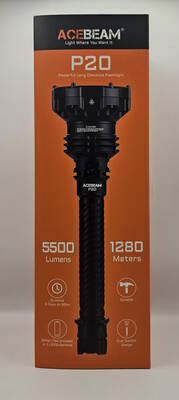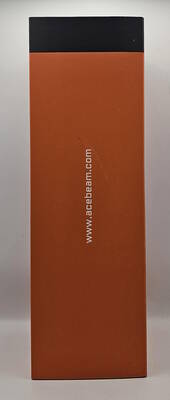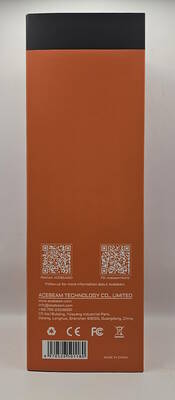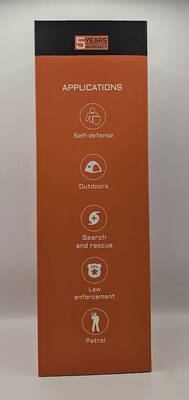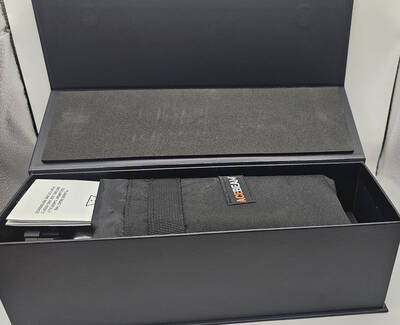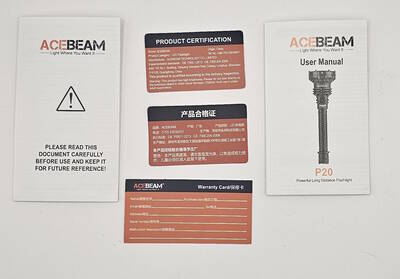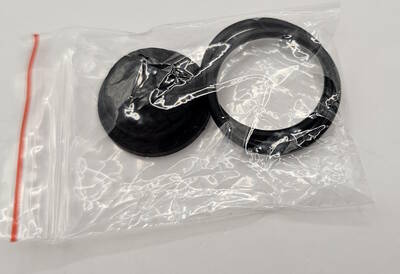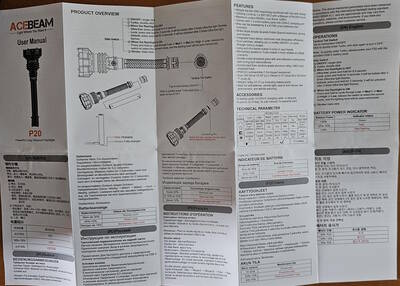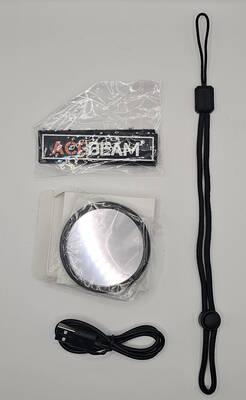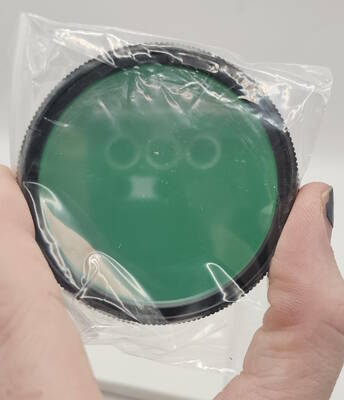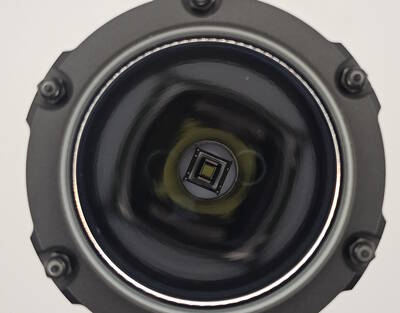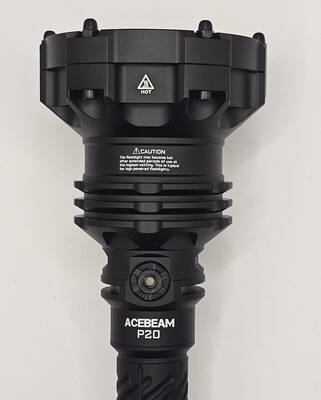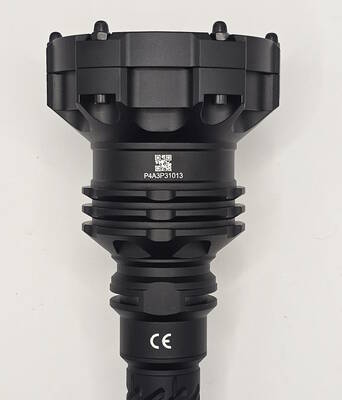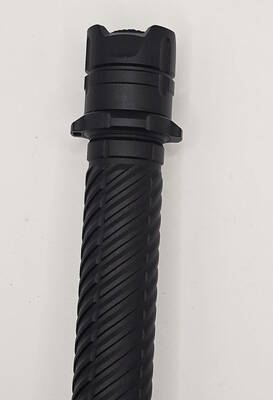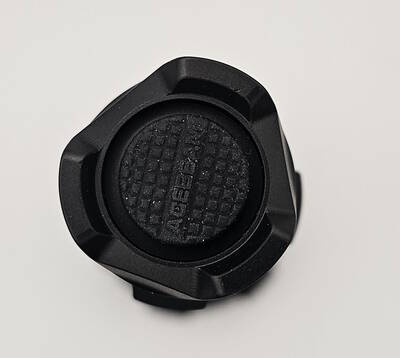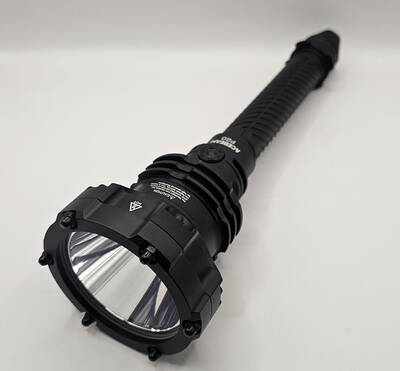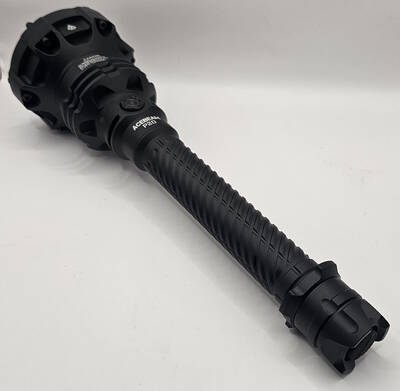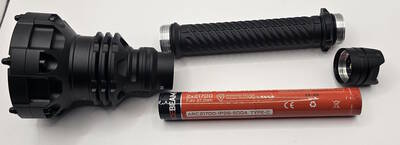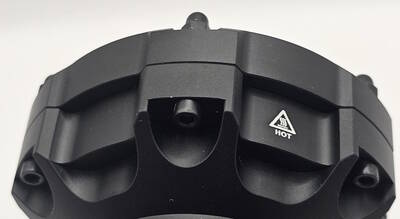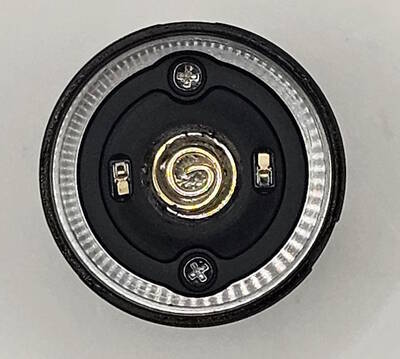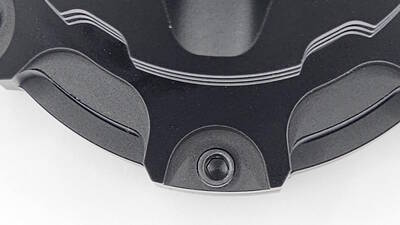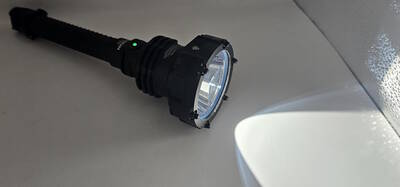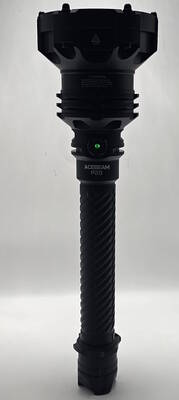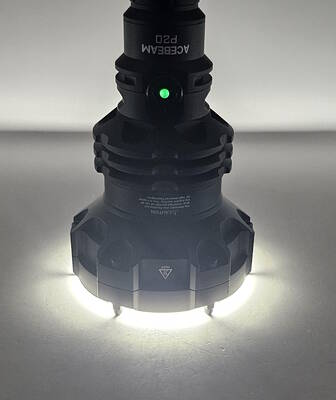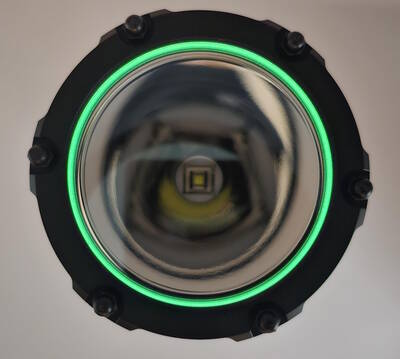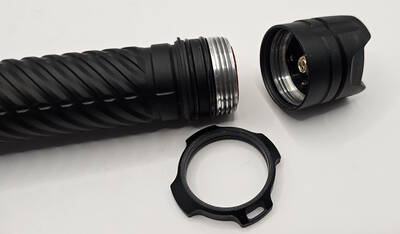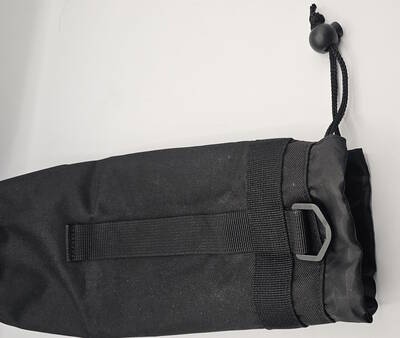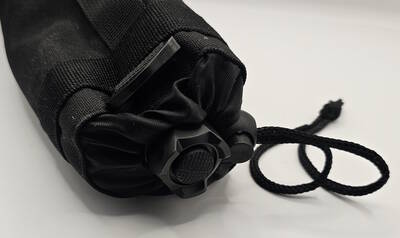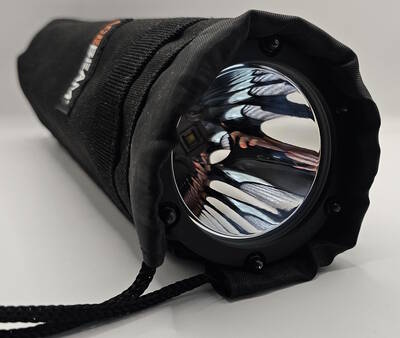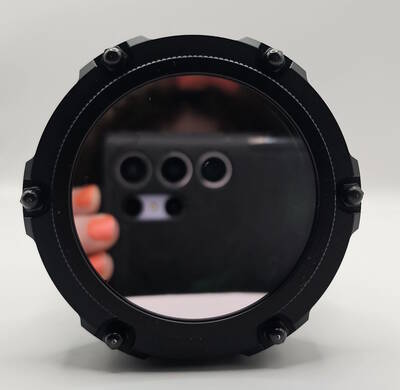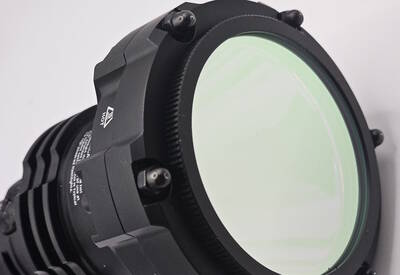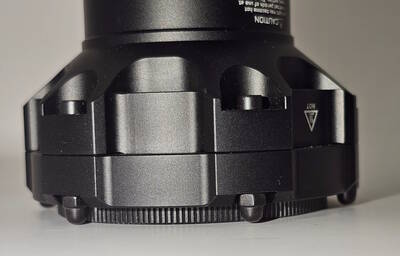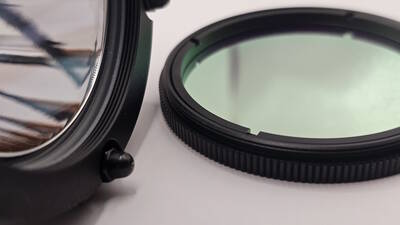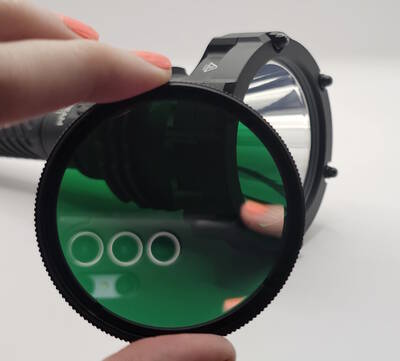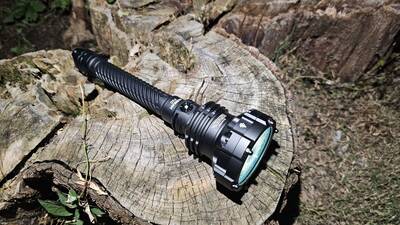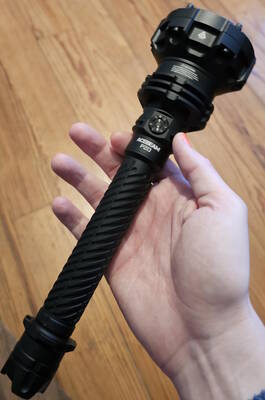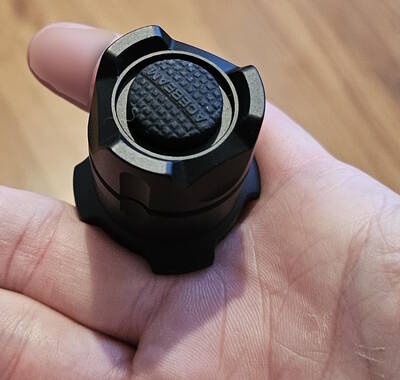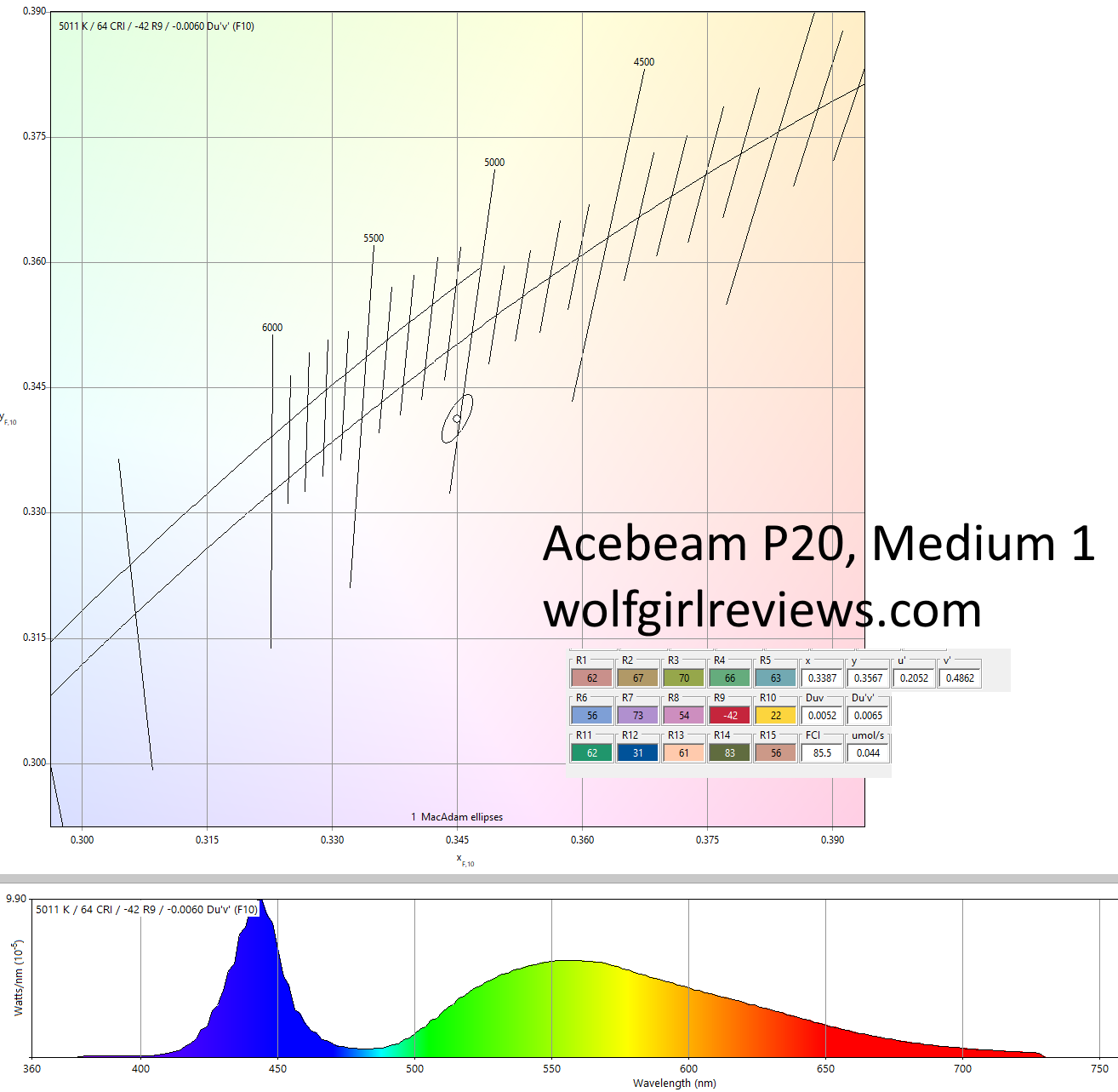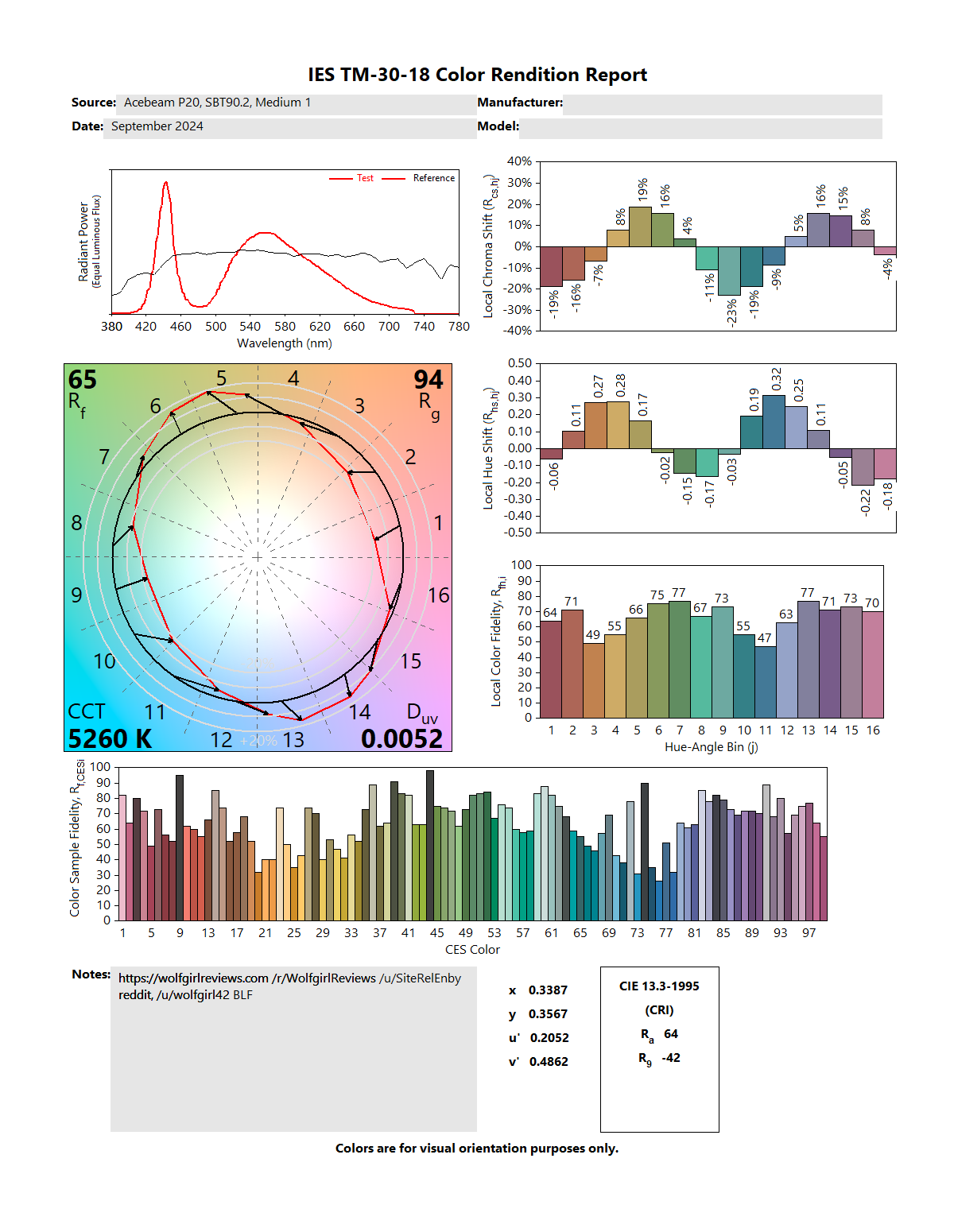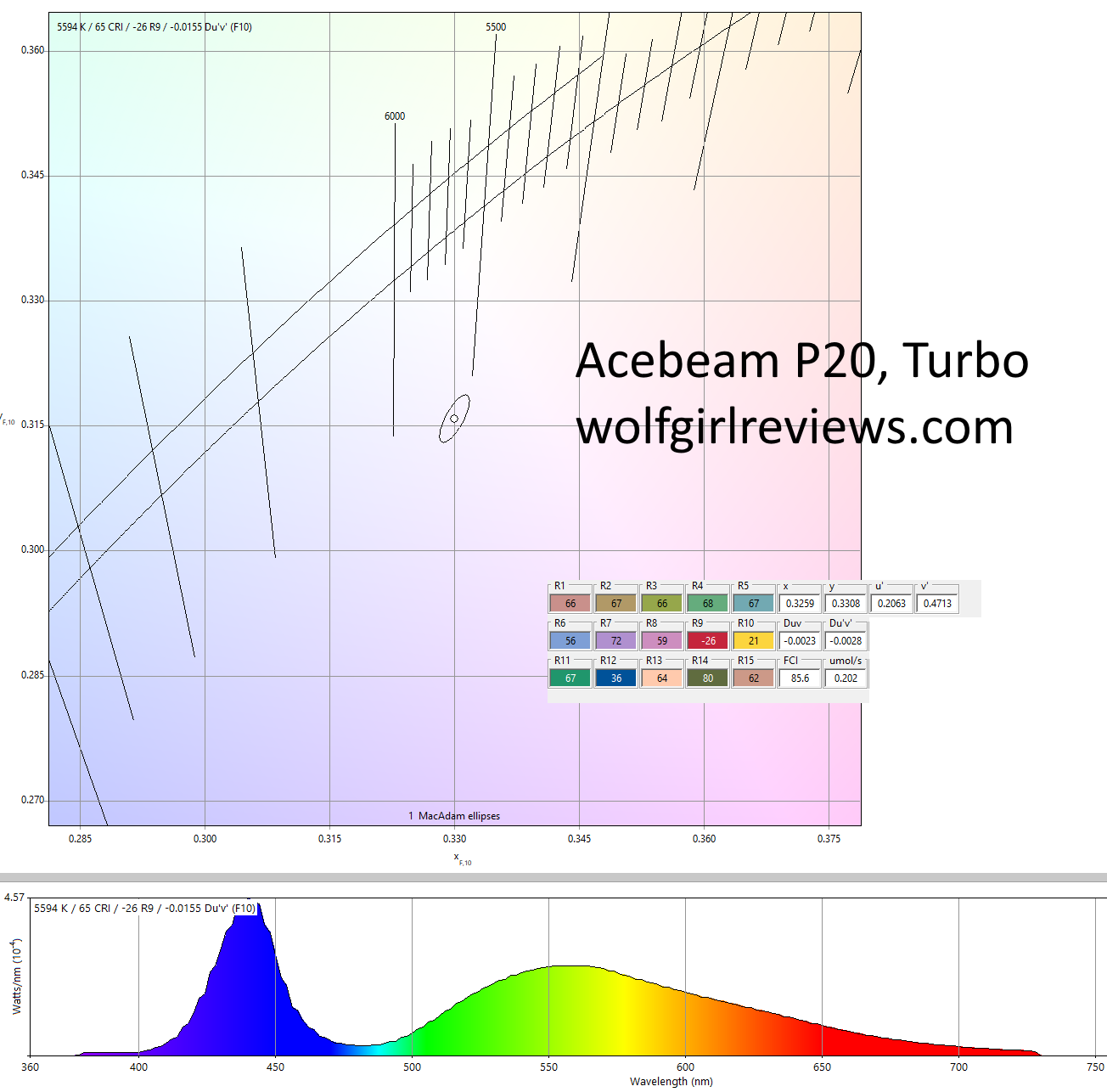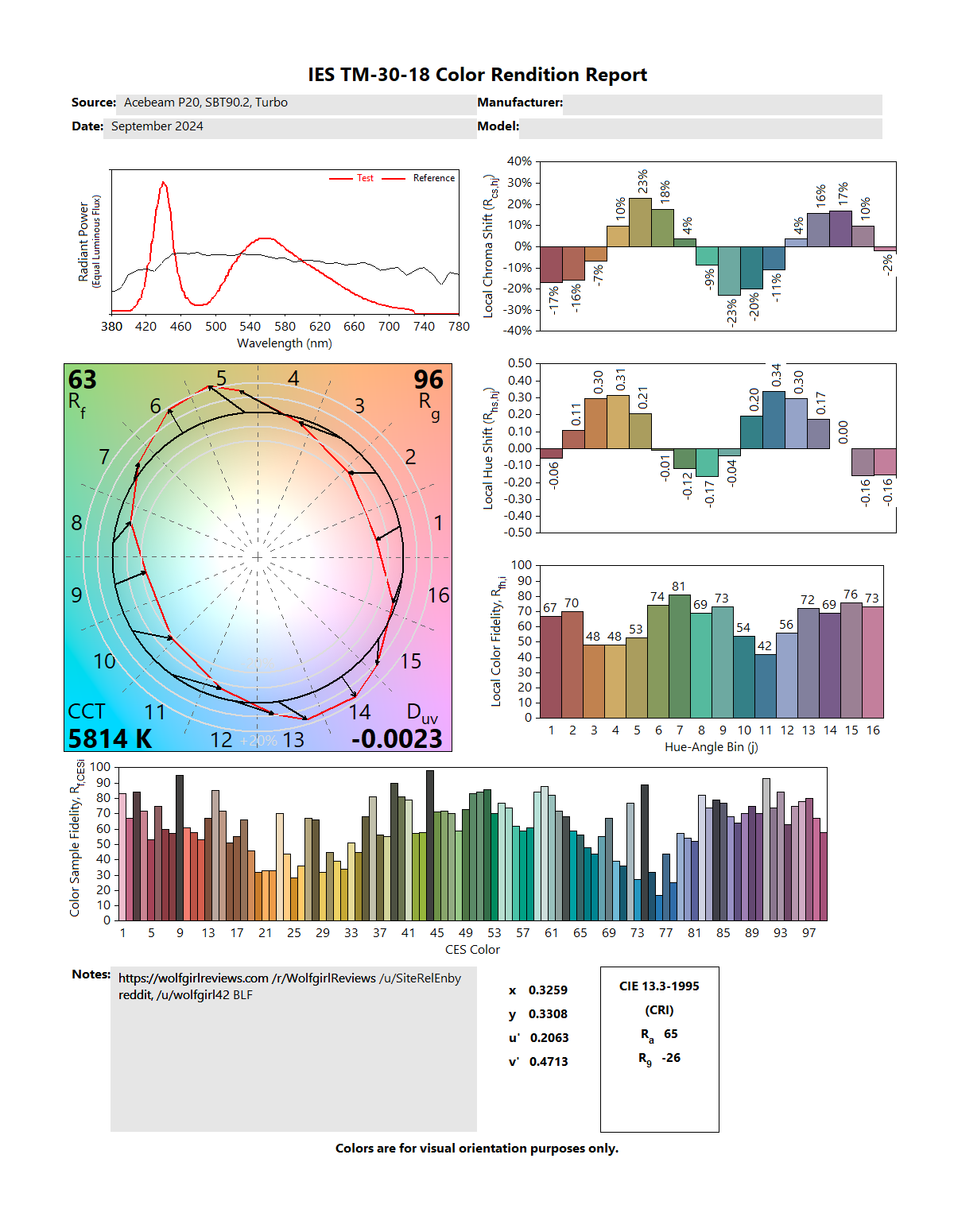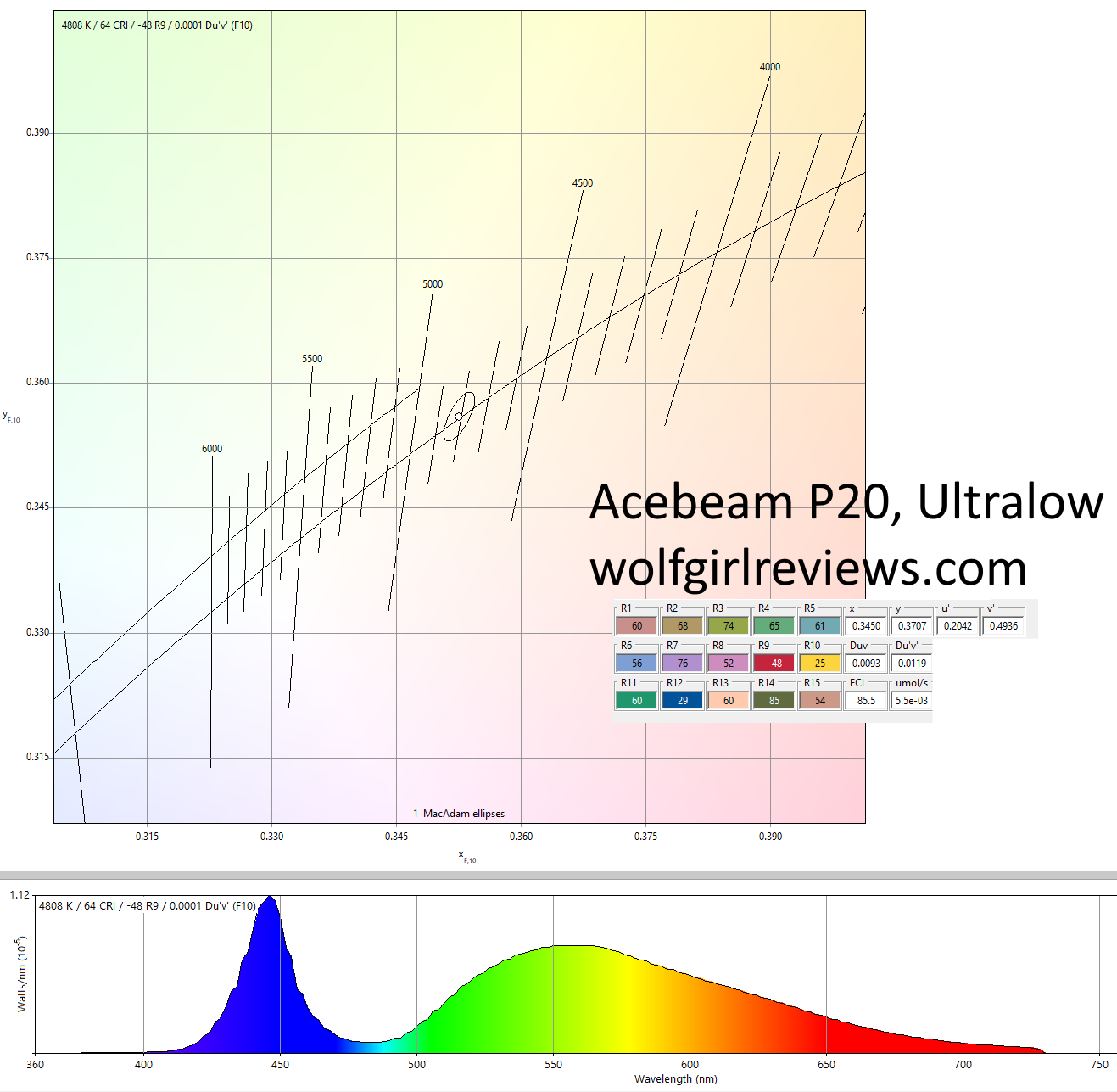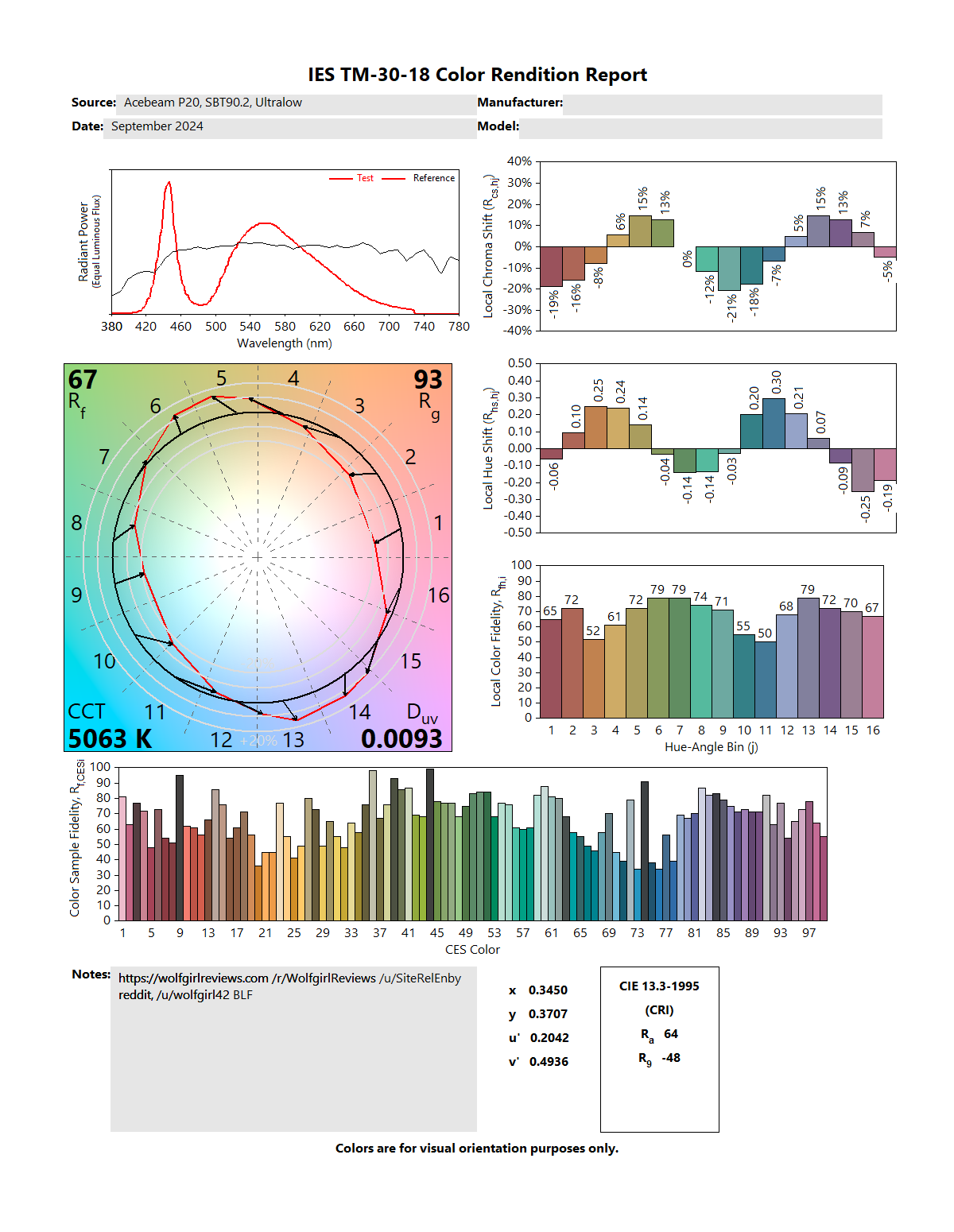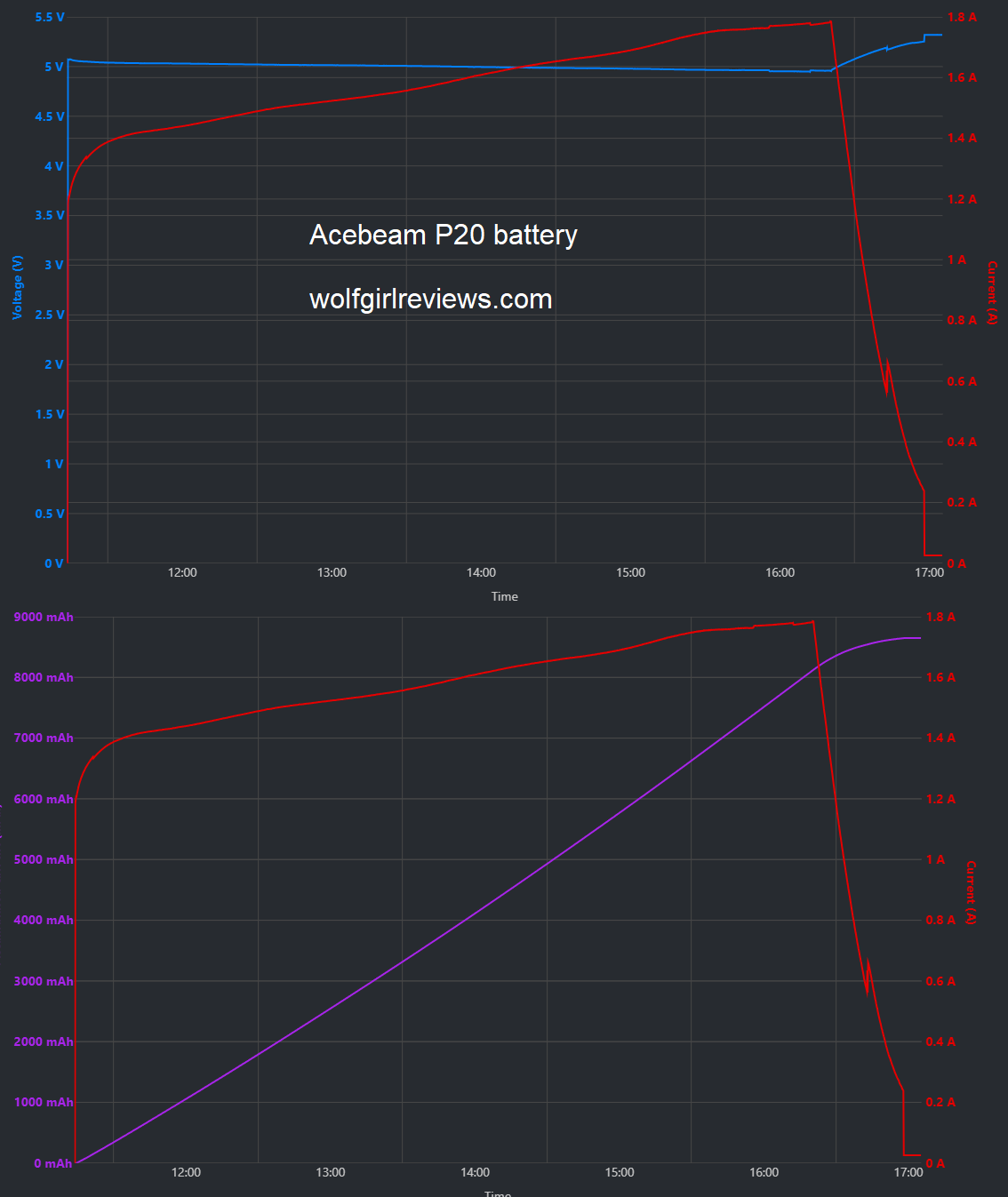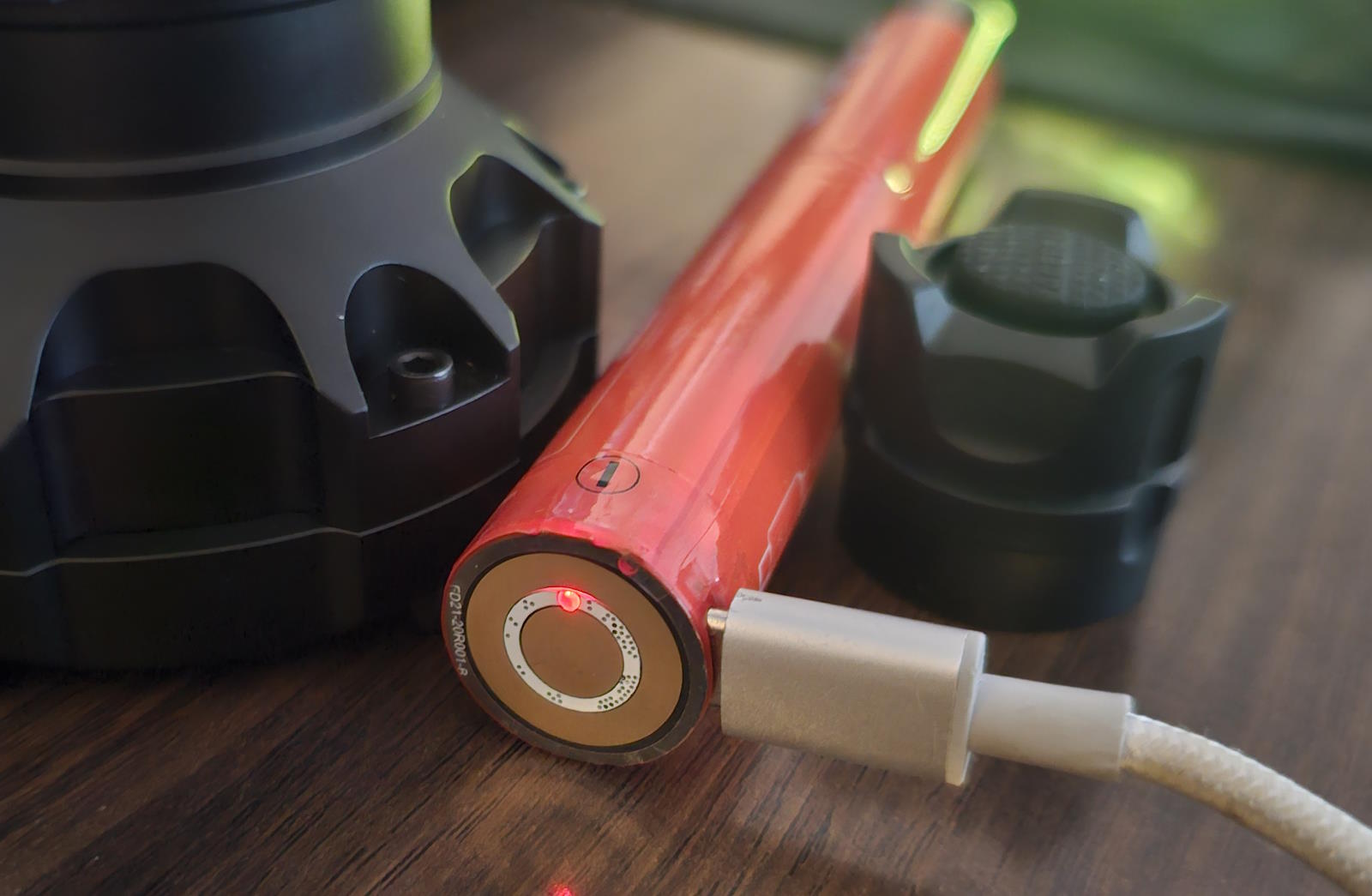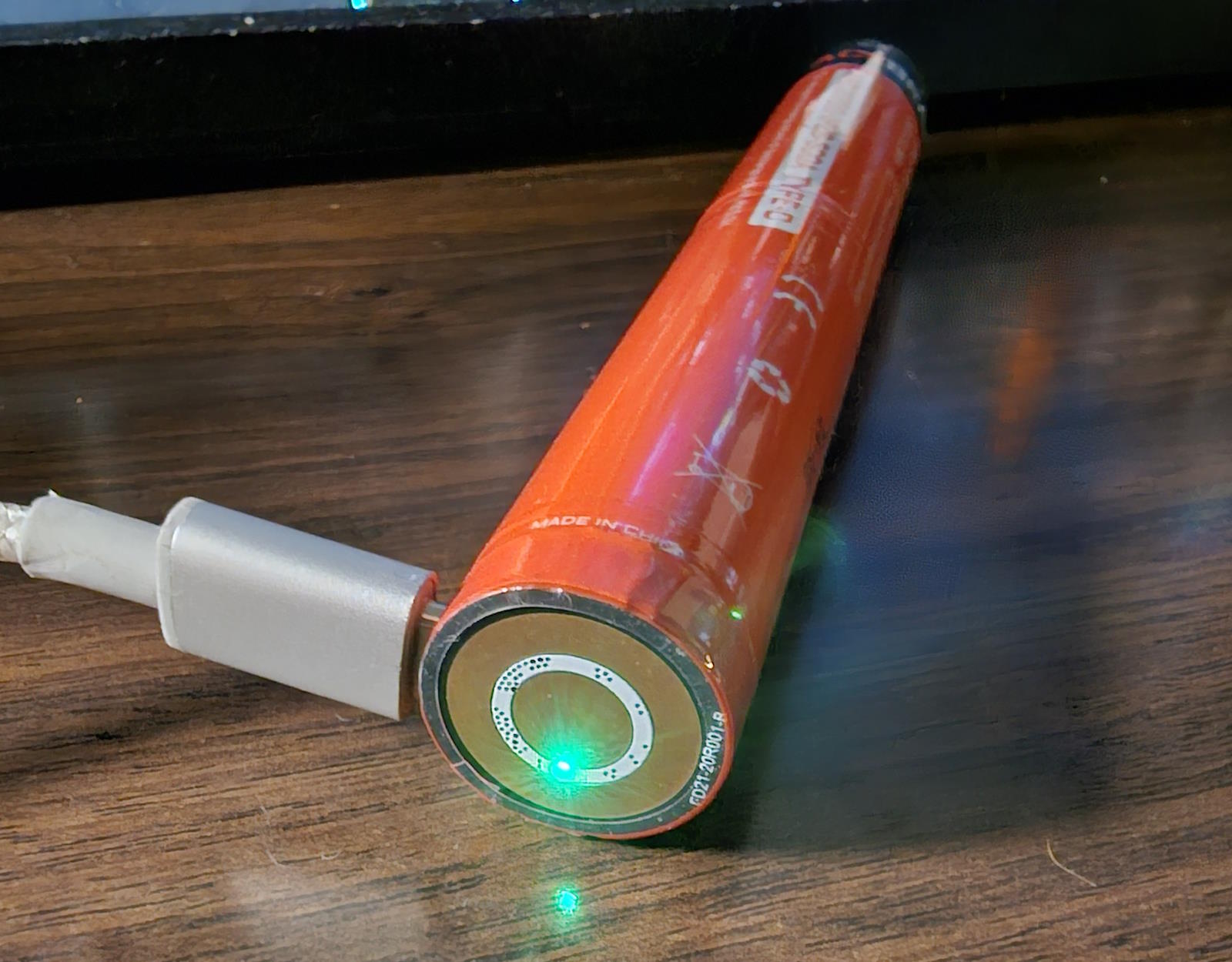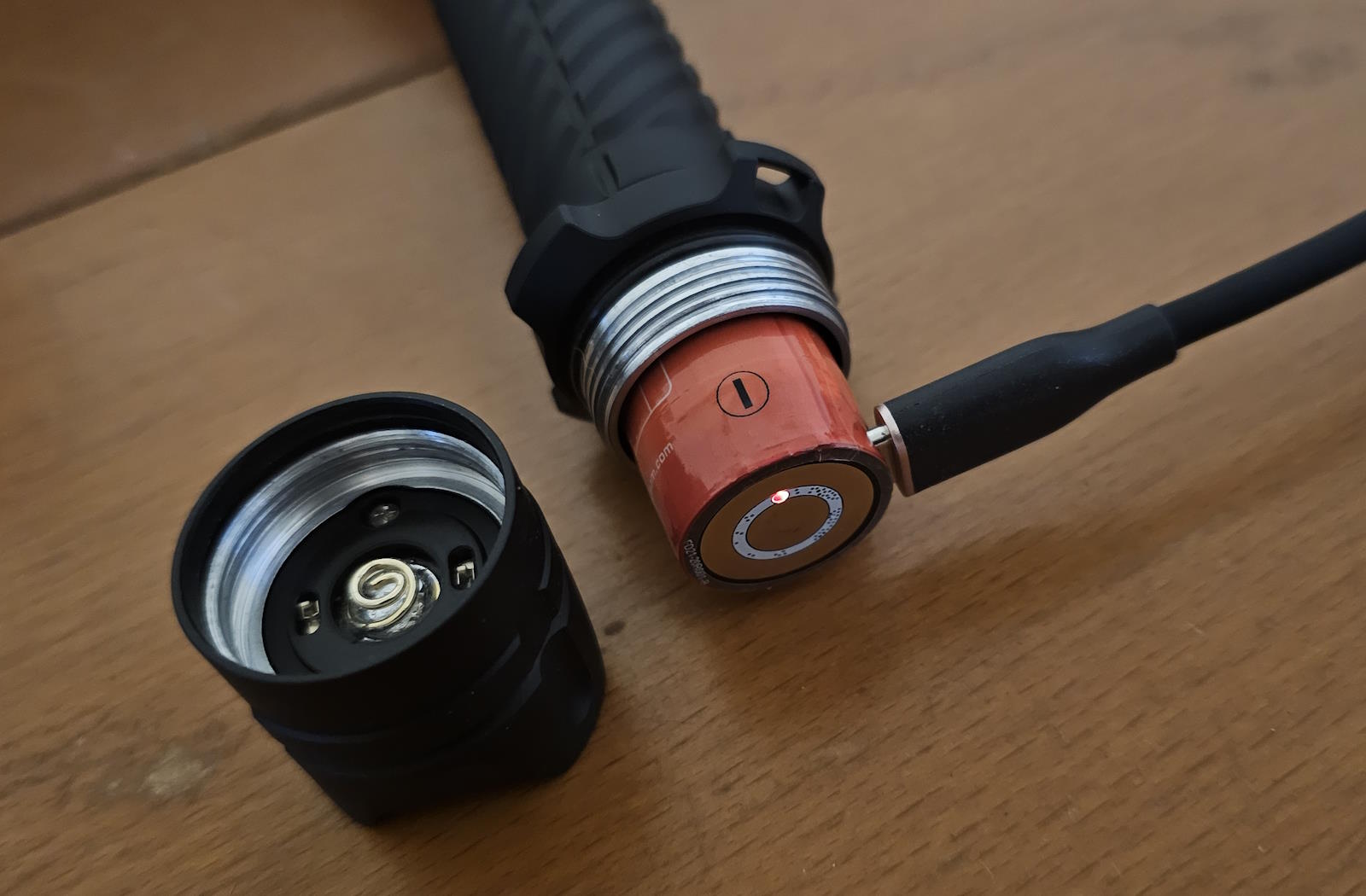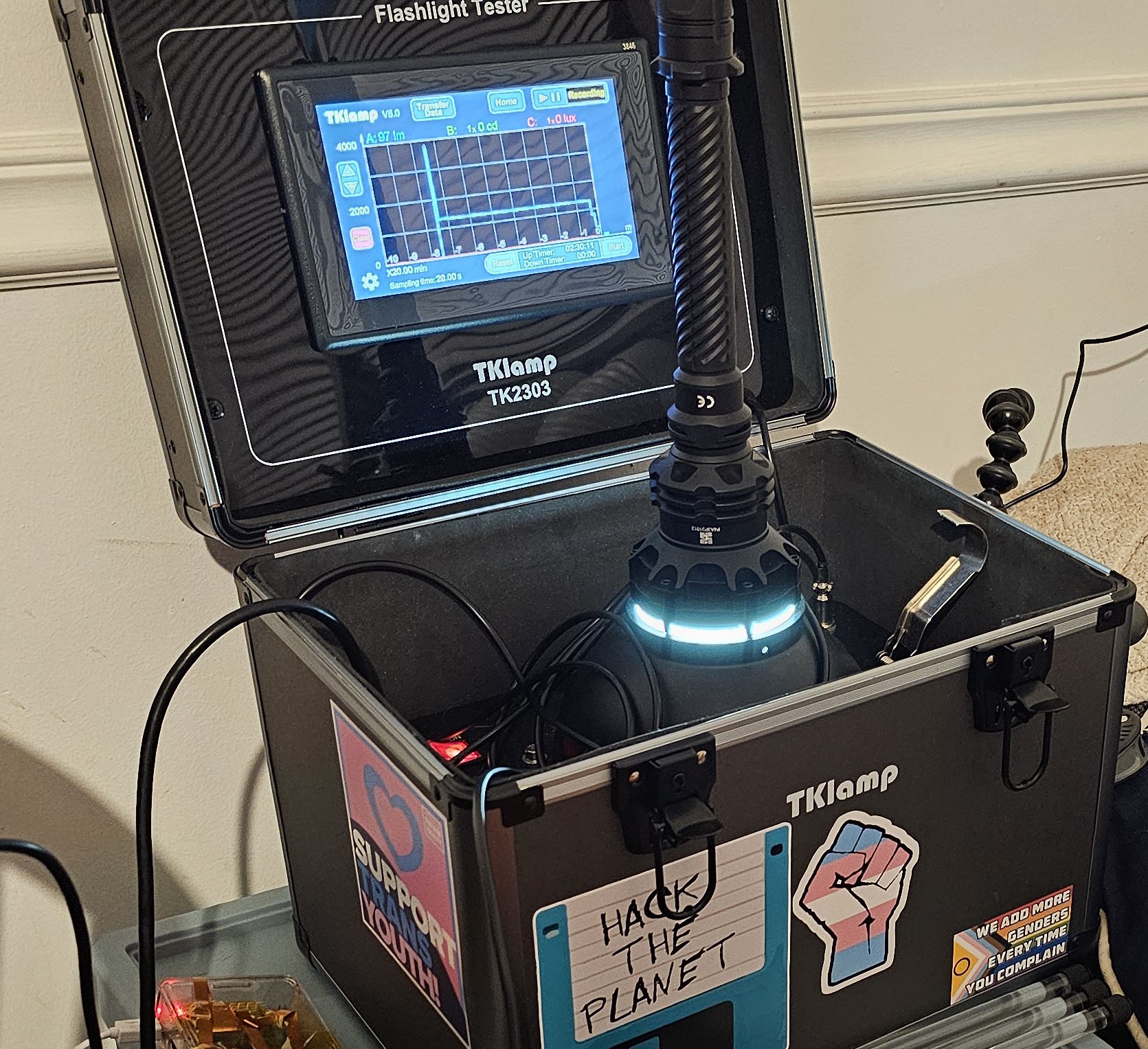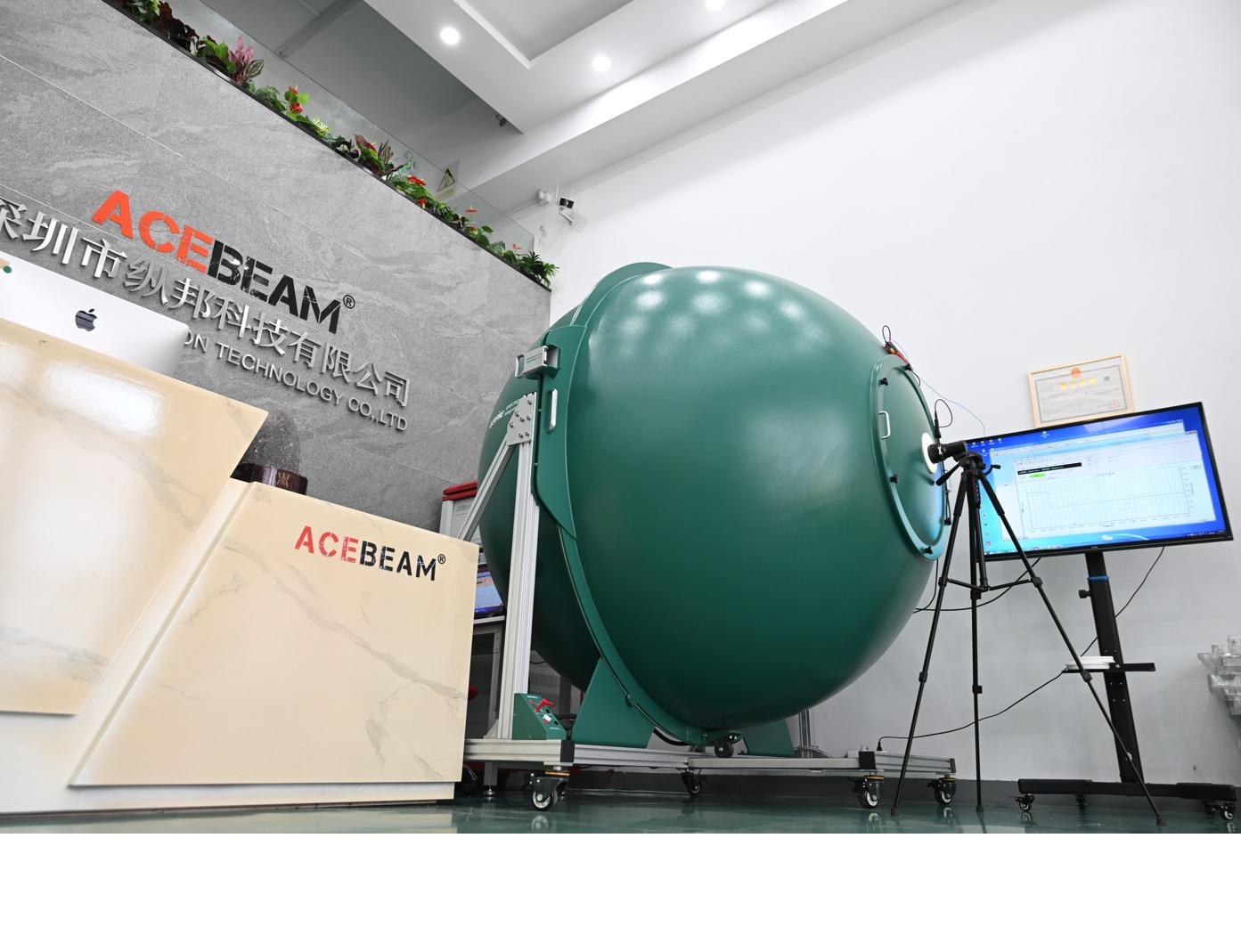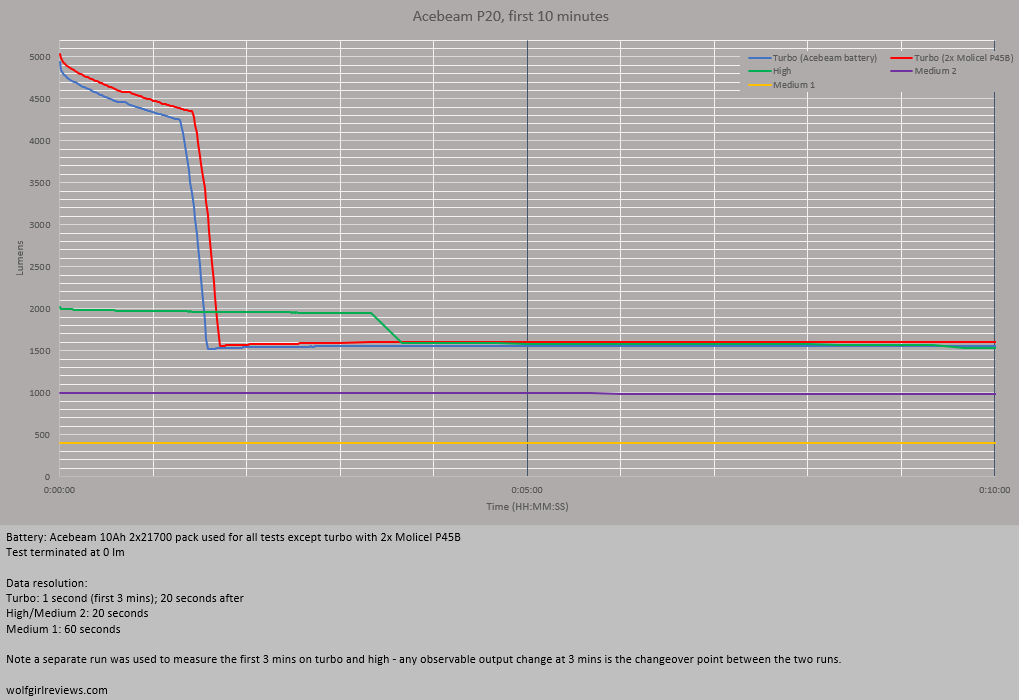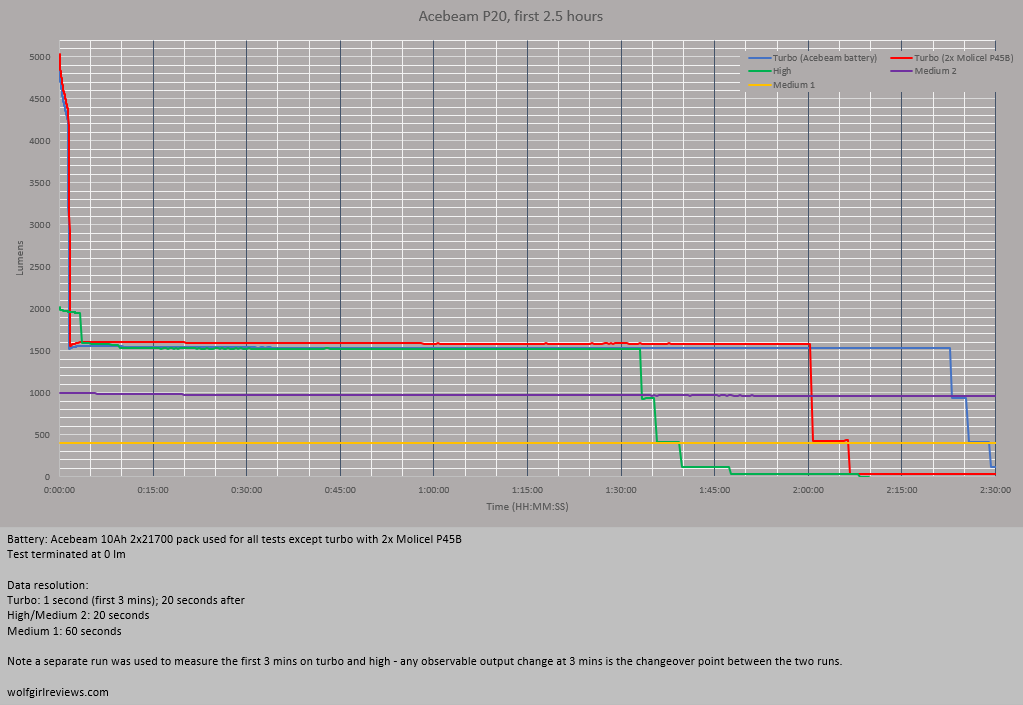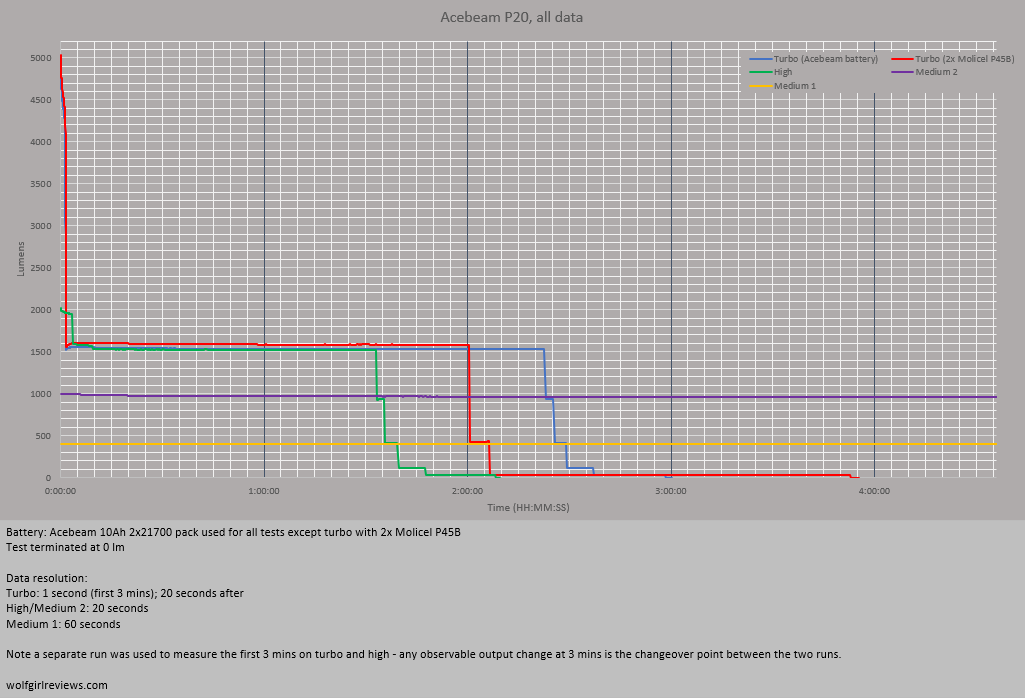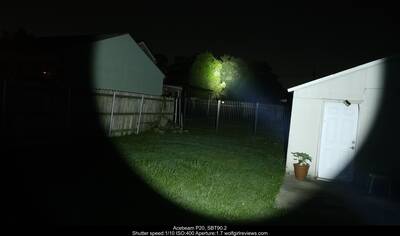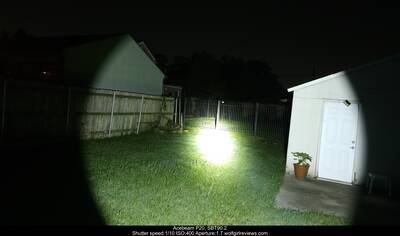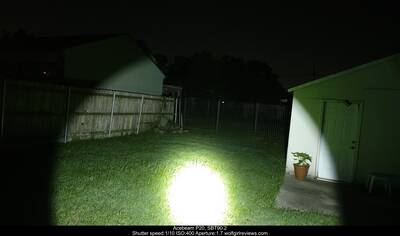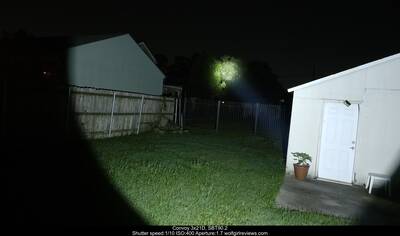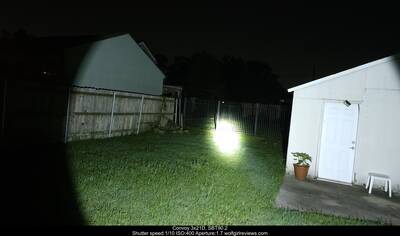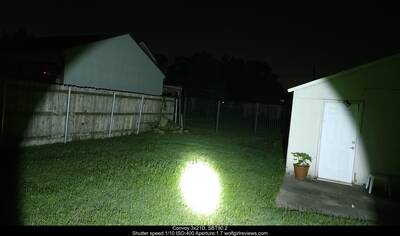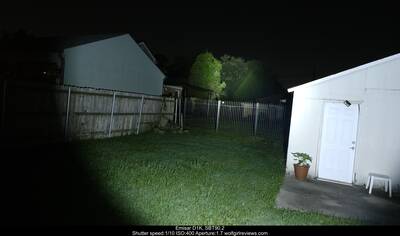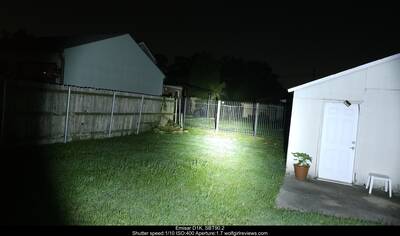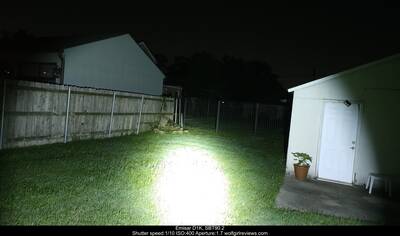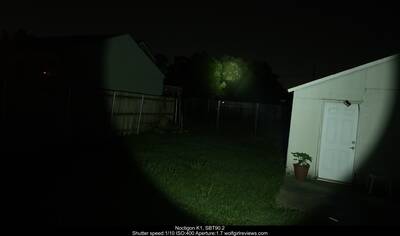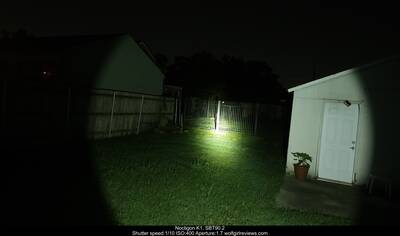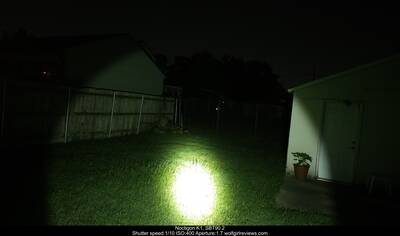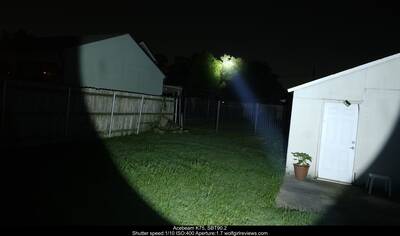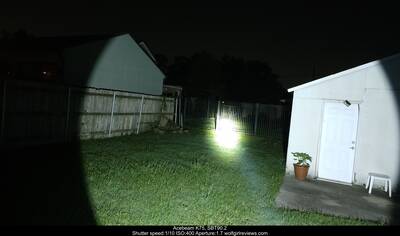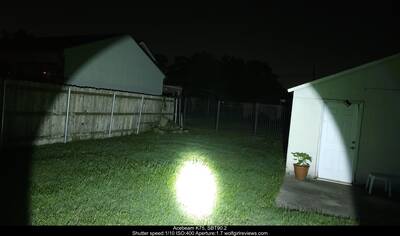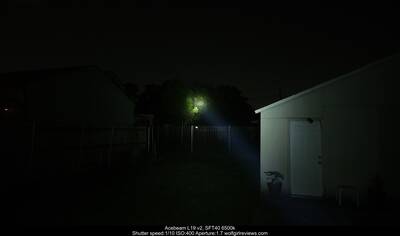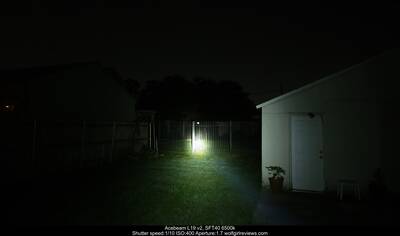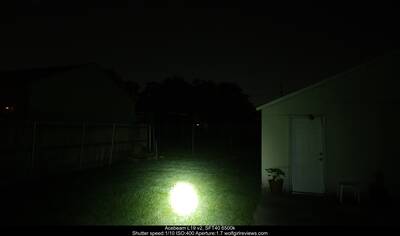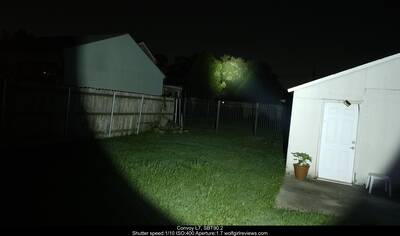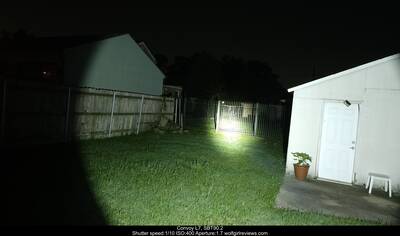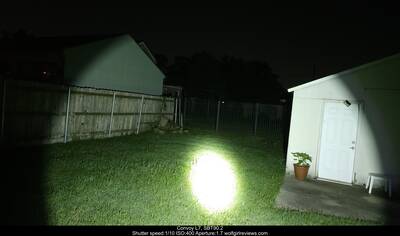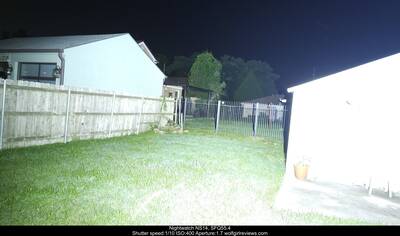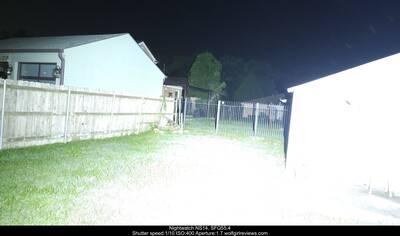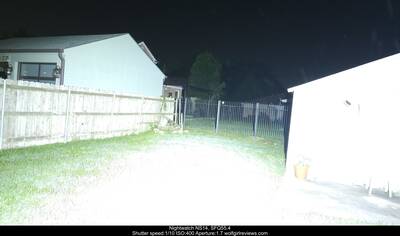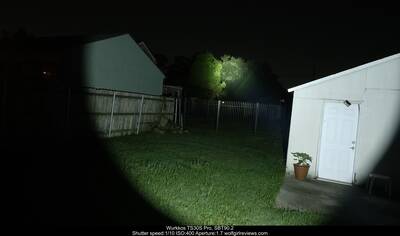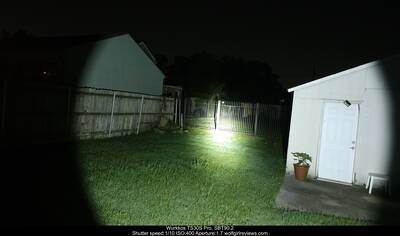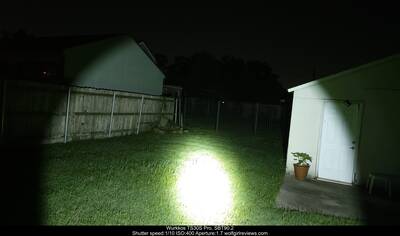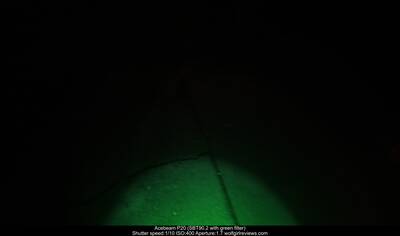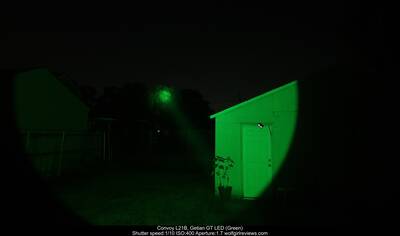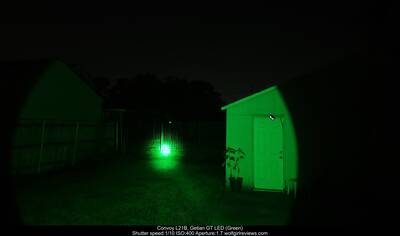"Acebeam clearly want to show Convoy that girth isn't everything in the bonk light game"
"Some people on Reddit did not like me calling the E75 tactical. So fine, here's a tailswitch thrower to make up for it."
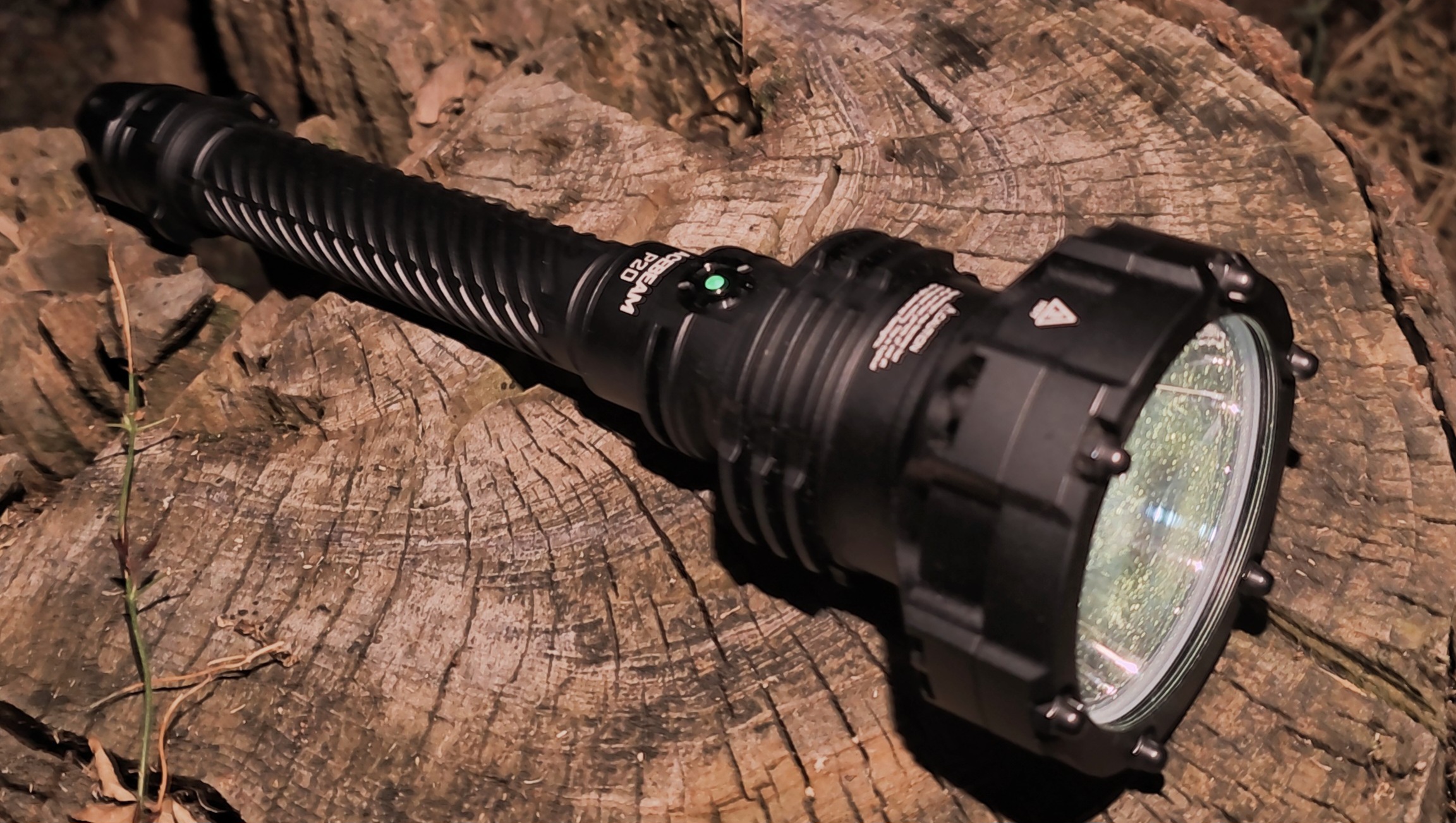 The Acebeam P20 is a large tactical SBT90 thrower, with a dual switch UI, and designed to use either a unique battery pack, or 2 standard 21700 cells.
The Acebeam P20 is a large tactical SBT90 thrower, with a dual switch UI, and designed to use either a unique battery pack, or 2 standard 21700 cells.
Introduction, Background, and Official Specs
Acebeam have a long history with tactical lights with both the P series and L series. The P series has previously tended towards smaller, more EDCable tactical lights, and the L series towards larger, "jacket pocket" sized lights. The P20 is Acebeam's newest light, and based on this naming scheme, would seem to fit into the L series, but is marketed as part of the P series instead.
The specific space the P20 competes in is the largest category of tactical lights commonly found, with two long batteries in series. This form factor is sometimes known as a "bonk light" from such lights' usefulness as a deterrent against aggressive animals or humans. Many lights in this space tend to use high intensity and high output emitters, most commonly the Luminus SBT90.2, and Acebeam has chosen to go with this tried and tested emitter. The P20 was first shown at Shot Show 2024, where the prototype P20 used a TIR optic and a different LED, but closer to release, Acebeam switched to the SBT90 and a reflector, more closely matching other competing lights in this space such as the Convoy L7 and Weltool F6R.
Official specs and test results:
| Parameter | Official Value | Measured |
|---|---|---|
| Output (Turbo) | 5500~1800 lm | 4,933 lm* |
| Runtime (Turbo) | 70s + 2h 40m | 2h 25m ANSI FL1; 2h 58m to 0 |
| Intensity (Turbo) | 409,600 cd (1,280 m) | 413,397 cd (1,286 m) |
| Output (High) | 2300~1800 lm | 2,016 lm |
| Runtime (High) | 3m + 2h 40m | 1h 40m ANSI FL1; 2h 8m to 0 |
| Intensity (High) | 133,590 cd (731 m) | 133,590 cd (637 m) |
| Output (Medium 2) | 1100 lm | 1,001 lm |
| Runtime (Medium 2) | 5h | 4h 52m ANSI FL1; 5h 15m to 0 |
| Intensity (Medium 2) | 66,306 cd (515 m) | 76,891 cd (555 m) |
| Output (Medium 1) | 470 lm | 30,102 cd (347 m) |
| Runtime (Medium 1) | 12h | 11h 29m ANSI FL1; 12h 23m to 0 |
| Intensity (Medium 1) | 30,102 cd (347 m) | 35,433 cd (376 m) |
| Output (Low) | 150 lm | 120 lm |
| Runtime (Low) | 36h | |
| Intensity (Low) | 10,920 cd | |
| Output (Ultralow) | 50 lm | 35 lm |
| Runtime (Ultralow | 74h | |
| Intensity (Ultralow) | 4,970 cd | |
| IP rating | IP68; up to 2 m immersion | |
| Impact resistance | 1.5 m | |
| Weight (without battery) | 358 g | |
| Weight (with battery) | 504 g | 502 g |
| Tube diameter | 25.4 mm | |
| Length | 267.5 mm | |
| Head diameter | 79 mm |
* See Performance for more details as this was far from a simple test, arguably the most complex testing I have done to date.
Calculated throw distances are using the ANSI FL1 standard and represent the distance at which 0.25 lux illumination is achieved, or the approximate level of light from a full moon - for a real world approximation of usable throw, divide this number by two.
General information:
| Parameter | Value |
|---|---|
| Battery size | 2x21700/semiproprietary |
| Battery type | Button top/semiproprietary/flat top with adapters |
| Battery check mode | Yes, 3 levels |
| Charging | Yes, USB-C on battery |
| Emitters | SBT90.2 |
| LVP | Yes |
| MSRP | $199 |
| Price (at time of publication, including any featured discounts) | $169 |
For runtime testing, I give two figures when possible. The ANSI FL1 runtime is calculated by when the light drops below 10% of initial output. I also attempt to run the light past this to find the point where it switches off automatically if possible. Many lights will run at 1 lumen of less for an extended time before powering off, and with these lights I note my observations on when the runtime test was terminated, and may terminate tests at this point as my current measuring setup has a minimum of 1 lumen. For testing of output, my acceptable margin of error is between 5% and 10%, with margin increasing with output.
I received this light for free from Acebeam in exchange for a review, and may receive a commission if the discount code featured in this review is used. I am not otherwise compensated for this review, and am giving my honest opinion without holding back on any negative experiences or overstating any positive. I may use affiliate links to Amazon or similar sites for things such as measuring equipment I use, but do not otherwise have any related interest in anything I mention.
First Impressions, Physical Design, and Build Quality
Acebeam clearly went to a lot of effort with the P20's packaging, and it is definitely an enjoyable unboxing experience. A magnetic closure box is covered by a cardboard sleeve with product photos and specs. Inside, the accessories are inside a large bag/holster, which includes large loops on the back for attachment as well as a ring at the top, and a drawstring closure. These accessories include two Acebeam-branded velcro patches, the instruction manual, warranty card, two product certification cards (which are identical, each one in both English and Chinese on opposite sides), a separate leaflet of warnings/disclaimers, USB A-C cable, lanyard, spare switch boot, and two spare o-rings. Acebeam also sell an optional green filter for the P20 for an additional $10, which was included with my sample. Below the accessories, the P20 sits inside a foam cutout.
The P20 has a wide, steeply flared head, with a very thick shelf section where the LED sits. Below this, it steeply narrows to meet the battery tube, giving a tiered look to the head with three separate diameter flat sections. On the closest section to the battery tube, there is a sideswitch. This switch appears to be a new design not seen on other Acebeam products yet, and has a red/green LED in the middle, and raised edges. The switch has a relatively short travel, medium pressure, and a tactile and audible click. I had no problem using the switch with gloves on, although the switch does occasionally fail to register my clicks when pressed on the very edge rather than towards the middle. Below the switch and immediately above the battery tube is the main branding on the light, "ACEBEAM P20", and the CE mark is on the other side.
The middle section of the head has some very deep fins for heat transfer, and a relatively long warning about heat generation from the light, although printed in very small text, and a QR code and serial number on the opposite side of the head. The top level of the head has the usual "HOT" symbol, and incorporates a very thick bezel, held in place by six bolts through the top of the head. I was slightly disappointed that Acebeam used rounded nuts on these bolts rather than the spiked ones seen in the prototype, but this change does improve its practicality in preventing potential damage to any surfaces it is placed head-down on, and overall gives it a less intimidating and "weaponlike" look than the spiked ones (opinions on whether this is an upgrade or downgrade probably vary with intended use case).
The nuts protrude from the top edge of the bezel by a few mm, so when the P20 is placed head down while on, a significant amount of light leaks out around the edges, enough to easily show that the light is still on. The inside edge of the bezel is slightly raised and contains threads for attaching the green filter, then a glass lens. Between the lens and reflector is a thick glow gasket. The gasket at the bottom of the reflector is a standard non-glow one, and the emitter is perfectly centred in the reflector, and the quality control of the entire head is excellent with no visible dust or imperfections anywhere.
The filter itself is made of dichroic glass, and is highly reflective up close, and both reflecting and transmitting at further distances. The threads are very fine and feel high quality, and the outer edge is textured for grip. With the filter inserted, it stands slightly higher than the tops of the hex nuts around the bezel, so becomes the contact surface when the light is headstanding. The filter itself is slightly inset from its bezel, but it is still much closer to the surface than the main lens, so I would always make sure to treat it carefully with the filter installed.
The battery tube has spiral knurling most of the way down it, but with much wider and deeper raised/indented areas than the E75, and without the pocket clip (which would be impractical on this light, to say the least...) or flattened sections. Towards the tailcap is a grip ring; this ring can rotate freely when the tailcap is tightened all the way down, but has a relatively tight feel and does not spin easily, instead needing some intentional force to move. The ring also contains the only lanyard hole on the light. If removed, there is an o-ring beneath it that is designed to hold it in place, and a second o-ring that is used to create a seal for the tailcap.
The tailcap itself has three raised sections, with wide gaps to access the switch, allowing both tailstanding and easy use with gloves on or with a forward-placed grip on the tube. The switch is an e-switch designed to work like a forward clicky and requires the bundled Acebeam battery; I go into more detail on the tailswitch in User Interface. Neither the threads on the head nor the tailcap are anodised, so a mechanical lockout is impossible, but the P20's UI does feature a lockout mode that works for both switches. Other than that, the threads are thick, smooth, and generally feel high quality.
Acebeam always include their semiproprietary 2x21700 battery pack with the P20 (it can also be bought separately for $30 here); there is no option for one without batteries. Since this battery is necessary for the tailswitch to function, most people will likely want the battery anyway, but the P20 is also compatible with standard 21700 batteries. The battery pack has a USB-C port on the negative end as opposed to the more usual positive - this design allows the battery to be charged while kept mostly inside the light, with only the tailcap removed and a few mm protruding, as opposed to having to remove the entire battery from the light to charge; a nice design feature with the length of this battery.
The P20's build quality is overall to a very high standard with no noticeable imperfections, and definitely has a premium feel befitting its price. Acebeam state the light uses HA III anodisation, and it definitely has the feel of it, with a smooth and consistent matte finish. I did not notice the finish picking up any scratches or marks during my testing or carrying for this review.
Acebeam's warranty is described on their website, and covers repair or replacement within 5 years of purchase, and lifetime repairs for the cost of replacement parts and shipping after the 5 years, in addition to a 12 month warranty on batteries.
Size Comparison
I took comparison photos of the P20 with a range of large and medium sized tactical lights and high powered throwers, as well as a few common lights as points of comparison.
- Convoy L7
- Nightwatch NS14
- Convoy L6
- Lumintop BLF GT90
- Acebeam L19 v2
- Wurkkos TS30S Pro
- Noctigon K1
- Acebeam K75
- Emisar D1K
- Fireflylite LEP01
- Convoy 3x21D
- Astrolux FT03S
- Imalent SR32
- Fireflylite X1L
- Convoy S2+
- Sofirn Q8 Plus
- Weltool W4 Pro Tac
User Interface
Actions are given in Anduril-style notation. 1C means click once, 1H means click once and hold the switch. 2C means click twice in a row quickly, while 2H means click twice quickly, holding the second click.
| State | Action | Effect |
|---|---|---|
| Off | 1C | On (mode memory) |
| Off | 1H | Ultralow |
| Any | 2C | Turbo |
| Any | 3C | Strobe |
| Off | Hold 5 seconds | Lockout/unlock |
| On | 1C | Off |
| On | 1H | Cycle brightness (Low/Med 1/Med 2/High/Turbo/Low; main modes accessible from ultralow) |
| Any | Tailswitch half-press | Momentary turbo (returns to off when released, even if previously on)* |
| Any | Tailswitch full-press | Turbo* |
* When the tailswitch is pressed, the sideswitch no longer has any effect and all inputs are ignored until the tailswitch is released, at which point the light will always switch off.
| What it gets right | What it gets wrong |
|---|---|
| Light can be switched on from either sideswitch or tailswitch | Lockout mode is slow to lock/unlock |
| Tailswitch always provides instant access to turbo from any state other than lockout, and is included in the lockout mode | Battery indicator only has three widely-spaced levels |
| Follows common conventions with 2C turbo, hold to change brightness, and modes are well spaced | Lockout mode indication less obvious than on L series lights |
| Direct access to low modes via ultralow when holding switch from off | While overall a hardware limitation, the nonfunctional tailswitch on standard batteries is a downgrade from the L series where it worked with either |
This user interface is almost entirely the same as Acebeam's other lights in the L series. I strongly prefer this UI to the P series UI, and this is my favourite dual-switch UI, and possibly favourite UI on any tactical light. One of my favourite features is the independent control from both the side and tailswitch, where many other dual switch lights use a completely mechanical tailswitch, necessitating the light always be switched on from the tailswitch and then the sideswitch to be used to select brightness. On the P20 and as with the L series, this allows the sideswitch for casual low-output use, then an instant switch to turbo with the tailswitch.
The tailswitch is an e-switch, and needs a separate current path to the battery negative through the body tube. Rather than the common approach for tail e-switches of a separate signal tube inside the battery tube (as seen in the Acebeam L series, Noctigon KR series, and Wurkkos TS10 series), Acebeam provided a signal path through the battery pack, accessed by two additional contacts on the tailcap and driver. This was presumably done to keep the diameter smaller, but I think a separate signal tube would be an improvement, as the tube is narrow enough for almost anyone to use comfortably - this would have been more of a problem for a light using 26mm batteries than 21mm, and I think full tailswitch functionality when using any batteries would have been a worthwhile tradeoff.
This UI also allows the tailswitch to be locked out as it is an electronic switch rather than mechanical, although this does reveal one weak point in the P20's version that is not present in the L19 or L35 - when the light is locked out, if the tailswitch is pressed the switch LED will light up to show the battery status, while on the other L series lights, it will rapidly alternate green and red to indicate the light is locked, which to me more readily implies "locked" rather than being potentially confusing to diagnose, especially as it persists across a battery removal. Similarly, when the sideswitch is pressed while locked, there is no indication from the LED at all, so it may theoretically be possible for someone to unintentionally enter lockout mode then not be sure what happened or to assume the battery was entirely discharged when it was not.
In theory this may be useful for locating the light in the dark by entering lockout mode and activating the tailswitch, but this comes at the expense of being able to quickly pick up and use the light, as lockout mode needs you to hold the sideswitch for 5 seconds to lock or unlock (officially this is stated as 3 seconds, but I have always timed this as closer to 5), which I generally find frustratingly slow, and I would have much preferred using 4C to lock and unlock, which would also allow the extra feature of being able to unlock directly to turbo for 5C, as in my opinion, fast access to turbo under all situations is important in a tactical light.
Using the Light
The P20 will probably not be many people's first choice for EDC - this is definitely a light intended for specific situations where a long runtime and high performance may be needed, and a large light in the hand can act as a deterrent against dangerous situations. The dual switches allow several different grip modes, depending on anticipated usage. The weight is biased towards the head with a much lighter battery tube, but not to the point of being difficult to handle when only held near the tailcap. Overall, when compared to the Convoy L7 as the most similar light I own, the L7 is heavier but the P20 inspires more confidence in ability to quickly manipulate my grip on, which I would ultimately prefer over pure weight, helped by the P20's head-biased weight balance. The battery tube and head both provide excellent grip on the light, although the heatsinking fins above the sideswitch do get hot when the light is used on turbo, and when gripping from the tailcap, the ring makes it feel secure enough to be easy to swing with some significant force without worrying about dropping it, while providing quick and easy access to turbo, so when walking with the P20, I tend to use it similarly to the L35, using the sideswitch to select a low output, then holding it predominantly from further back for quick access to turbo if needed.
One minor criticism is that I feel the ring should be slightly further down, as I tend to want to place more of my hand behind it than is possible on the P20, but once I got used to the feel, I was able to adapt easily. As previously mentioned, the ring can be removed and the light is clearly designed to be usable without it as well, but it is a tight fit on and off and when I did remove it, I managed to shred the upper o-ring used to seal the tailcap when replacing it, so I would not recommend doing this unless you strongly prefer it without one. The only lanyard hole in the light is also on this ring, and the lanyard Acebeam provided is thick and high quality, and feels able to support the P20 without any risk of breaking, although I personally did not find it useful in actually carrying it. The belt pouch, on the other hand, is excellent, and although clearly designed for head-down carry, does work for head-up too, although at the cost of not being able to close it so the lens is not protected from dirt or scratches.
The P20 provides a good balance of flood and throw, being on the floody side for a large SBT90 light, but still with more than enough range for most outdoor situations. There is no true moon mode, the lowest mode being a 50 lumen "Ultralow". With the intensity of the SBT90 emitter, I find this setting too bright to comfortably look directly at the emitter up close (what in my opinion is the benchmark for what qualifies as moon), but still sufficiently low to be able to walk around in dark areas without compromising night vision.
The green filter, when attached, does not result in an increase in candela, as the total amount of light output is reduced, compared to a dedicated green emitter where all of the output light is green. As such, this filter is most useful to use the P20 without compromising night vision, as green does have a similar effect to red in this way, although the effect is less strong than of red light. The reason green would be used for this over red in a thrower is that the increased sensitivity of the eye to green over red allows much better vision at a distance while still maintaining reasonable night vision. When in use, the green filter makes the beam noticeably more floody, and the overall green is relatively deep without any noticeable bleedthrough of white, although when used up close on high levels, there are multiple red rings visible around the edge of the spill. This is likely a side effect of the dichroic glass' differing reflectivity with angle, but has no practical effect on the beam.
Driver and Emitters
The emitter in the P20 is the popular Luminus SBT90.2. This is a domeless LED with a large die surface, known for having both high output and high intensity. Since the SBT90.2 is a 3 volt emitter and the P20 uses two batteries in series, this implies a buck driver, and the driver has very flat and consistent output as the battery discharges, as expected. The overall efficiency of the driver is high, with respectable runtimes for the battery capacity.
I could not detect any PWM at any level with either my eyes or camera.
I measured the P20's CCT and CRI with a Colormunki Photo and ArgyllCMS.
CRI and Tint
The P20 shows the typical beam characteristics of the SBT90, which tends to be variable between individual emitters, usually with a CCT between 5000k and 5700k, with CCT tending to increase and DUV to become more negative at higher levels. My sample was very close to neutral on moon level and with a CCT of around 4800k, increasing to ~5000k on medium levels, and ~5600k on turbo, with a fairly strongly negative DUV at its peak of -0.0155. The beam is almost perfectly symmetrical, with excellent attention to detail in the assembly of the reflector, and only a few minor artifacts at the edge of the spill from the hex buts securing the bezel. There is a hole visible in the hotspot when up very close to a wall at around 4-5cm or less; otherwise the hotspot is neat, well-defined, and symmetrical. There is a small amount of tint shift to the edges, but none in the spill itself. Overall, while the SBT90 tends to not be a favourite LED of those strongly concerned about tint, it still gives a warmer and less green tinted beam than most comparable emitters.
Power and Charging
The P20 comes with a battery pack, containing 2x21700 wrapped together in series, with a USB port at the negative end (instead of the positive end more commonly seen on batteries with built-in USB ports). This allows the battery to be charged while mostly still inside the light, with just the tailcap removed, although it may create some confusion if the battery is entirely removed, as both ends are entirely flat, although the P20 does include reverse polarity protection and the wrap is black on the positive end. The battery also appears to have a PCB at both ends, as well as an internal current path for the tailswitch, so presumably includes a BMS to handle balance charging the two 21700 cells inside, and also includes overcurrent and short circuit protection, as well as low voltage protection - when testing using this battery, it read at 0V afterwards until charged. There is an LED embedded inside the negative end of the battery, which lights red when the battery is charging, and green when done, positioned so it is visible when the battery is inside the light with the tailcap removed.
The P20 also works with standard 21700 cells - I was able to use it with Acebeam-branded protected USB-C batteries without any problem. Two unprotected flat-top batteries were too short to engage the tailcap's spring, although they do work with several of Simon's battery spacers to fill the gap and allow contact.
Charging data was collected using rd-usb with an RDTech TC66C (info, Amazon (US)).
The battery charges at a maximum rate of 1.8A, which is well within the acceptable range for 2x21700, although it does mean the battery pack takes almost 6 hours to charge from empty. Since this is a special battery that is only available directly from Acebeam, I personally do not mind this charge rate as it will have a lower impact on the long term health of the battery than a higher rate would, but some people who are intending intensive daily use of the P20 may want to consider purchasing a second battery or having some spare 21700 cells available.
Moddability and Repairability
The P20's bezel can be opened with the exposed hex nuts, although some force is needed as they use threadlocker. Inside, the emitter can be accessed, although there is not much scope for an emitter swap here due to the SBT90's uncommon footprint, and the driver is too high powered for most other emitters. The LED could theoretically be delensed for higher output, but this is a very risky mod. Tim McMahon did a detailed teardown of the P20 including the switch. Acebeam provide a replacement switch boot, which is a nice additional touch, and the tailswitch easily comes apart with just two screws, although I found the switch boot to be rugged and well designed so it should stand up well to extensive use.
This section is provided for informational purposes only. Modding or DIY repairs will void most warranties, and Wolfgirl Reviews takes no responsibility for any damage as a result of attempts to disassemble, mod, or repair any light.
Performance
Methodology: All lumen and candela measurements taken using a TKLamp TK2303D. This is a project that I initially contacted TKLamp about creating the datalogging version, and I received mine at a discounted rate as part of a BLF/Reddit group buy of the initial production run. The overall width of the P20's head is slightly larger than the opening on the TK2303D - although the actual lens size would fit, the bezel is thick enough to prevent this, and the raised hex nuts on the head also create a gap that some light was able to escape from as they rested on the rim of the sphere's opening (see the below image), so I made an adapter from cardboard and aluminium foil that fit around the bezel and reflected as much light as possible back inside the measuring device, and used this adapter for taking my calibration measurements on both the integrating sphere and lumen tube.
The P20 on my sphere without the custom adapter ringI also tested the P20 in my larger aperture Texas Ace Lumen Tube for absolute lumen output, revealing a loss of around 700 lm between the two on turbo. This is likely caused by the P20's combination of high lumens and candela - the P20 is on the edge of what I am able to test accurately with the combination of the two. I used this data to calculate custom calibration factors for the TK2303D to compensate, so these results should be closer to the true output than I would otherwise have achieved, while still having the improved convenience of the TK2303D's built in datalogging.
Another factor to consider is the relatively large lens surface relative to the internal surface area - the head of the light takes up around 6-7% of the total internal surface area of my sphere. The closer the ratio between the two, the lower accuracy of an integrating sphere, and this is high enough that there is a noticeable accuracy penalty, as the head itself will absorb some of the light emitted. If you are interested in technical implementation details of an integrating sphere in depth, I would suggest reading the excellent (and free) Integrating Sphere Theory and Applications from LabSphere - the recommendation in the book is 5% as an upper bound for the relative size of any port, with increasing accuracy loss as the proportion increases. I discussed my results with Acebeam and am told that the spec is from a large integrating sphere, pictured below.
This is the sphere used to test the P20 (P20 not pictured). Is "sphere envy" a term?...[Source: Acebeam; permission obtained for use.]
With this in mind, and also considering the lumen tube's less precise calibration and tendency to read slightly low at these output levels, I would estimate a 15-20% overall compounded margin of error.
To compensate for the limited data point capacity of the TK2303D, I did two separate turbo tests per run, with a shorter 3 minute test at 1 second resolution to measure instant stepdown, then a run with 20 second resolution to measure overall runtime. Candela measurements were performed indoors at a distance of 5m, using the TK2303D's built-in luxmeter.
Output and Throw
| Mode | Spec | Peak output | Output after 30s | Output after 1 minute | Output after 90s | Output after 5 minutes | Output after 15 minutes |
|---|---|---|---|---|---|---|---|
| Turbo (Acebeam battery) | 5,500 ~ 1,800 lm | 4,933 lm | 4,519 lm | 4,342 lm | 2,517 lm | 1,555 lm | 1,547 lm |
| Turbo (2x Molicel P45B) | 5,500 ~ 1,800 lm | 5,035 lm | 4,662 lm | 4,478 lm | 3,820 lm | 1,609 lm | 1,602 lm |
| High | 2,300 ~ 1,800 lm | 2,016 lm | 1,980 lm | 1,972 lm | 1,966 lm | 1,585 lm | 1,527 lm |
| Medium 2 | 1,100 lm | 1,001 lm | 1,001 lm | 999 lm | 998 lm | 991 lm | 980 lm |
| Medium 1 | 470 lm | 434 lm | 434 lm | 434 lm | 434 lm | 433 lm | 430 lm |
| Mode | Spec | Peak candela | Candela after 30s | Candela after 1 minute | Candela after 5 minutes | Candela after 15 minutes |
|---|---|---|---|---|---|---|
| Turbo (Acebeam battery) | 409,600 cd (1,280 m) | 413,397 cd (1,286 m) | 388,179 cd (1,246 m) | 370,017 cd (1,217 m) | 134,100 cd (732 m) | 133,596 cd (731 m) |
| High | 133,590 cd (731 m) | 101,587 cd (637 m) | 100,614 cd (634 m) | 100,460 cd (634 m) | 99,836 cd (632 m) | 99,098 cd (630 m) |
| Medium 2 | 66,306 cd (515 m) | 76,891 cd (555 m) | 76,769 cd (554 m) | 76,667 cd (554 m) | 76,181 cd (552 m) | 75,522 cd (550 m) |
| Medium 1 | 30,102 cd (347 m) | 35,433 cd (376 m) | 35,424 cd (376 m) | 35,406 cd (376 m) | 35,320 cd (376 m) | 35,235 cd (376 m) |
For candela measurements, candela scales linearly with lumen output for the same LED and optic, so overall candela over time will match the output graphs. Calculated throw distances are using the ANSI FL1 standard and represent the distance at which 0.25 lux illumination is achieved, or the approximate level of light from a full moon - for a real world approximation of usable throw, divide this number by two.
Runtime
| Mode | Spec | Time to thermal stepdown | ANSI FL1 Runtime | Overall runtime |
|---|---|---|---|---|
| Turbo (Acebeam battery) | 70s + 2h 40m | 1m 34s | 2h 25m | 2h 58m |
| Turbo (2x Molicel P45B) | 70s + 2h 40m | 1m 43s | 2h 6m | 3h 53m |
| High | 3m + 2h 40m | 3m 40s | 1h 40m | 2h 8m |
| Medium 2 | 5 hours | N/A | 4h 52m | 5h 15m |
| Medium 1 | 12 hours | N/A | 11h 29m | 12h 23m |
Performance Overview
Considering my remarks in the methodology section, I would consider the P20 as meeting specs on lumen output within my total margin of error and the fact that multiple complicating factors meant this test was pushing the limitations of my test equipment much beyond any other testing I have done so far, even for higher lumen but lower candela lights (LabSphere/Thorlabs/similar, if you're reading this I'd be happy to accept a sample sphere ;) ...), and close to spec on runtime; in some cases exceeding spec, although not consistently on every mode. Candela was slightly over spec for most modes, although within a reasonable margin of error.
Overall, the P20 has very good performance, certainly within the capability of an SBT90.2 in any case, particularly when considering it comes close to many FET-based direct-drive SBT90 lights as a performance figure for a driver with efficient regulation; something that the P20 excels at, with a flat output curve through almost the entire battery capacity after thermal stepdown, before a relatively short period at the 30-40 lm range before powering off.
When using two high drain Molicel P45B, the initial turbo was slightly brighter and thermal stepdown took longer - this is likely caused by the lower internal resistance of these batteries compared to the battery pack, while the higher CDR made less of a difference due to the driver design. The runtime at ~30 lm was also noticeably longer, likely due to higher performance at a low state of charge for these batteries, but the overall useful runtime as judged with the ANSI FL1 standard was shorter, reflecting the 1000mAh lower total rated capacity of this battery setup. I did not test all output modes with P45B, as they are only being worked harder than the Acebeam battery is capable of on Turbo, so lower modes would just be the same performance but with an around 10% shorter runtime.
Beamshots
| Light | Emitters | Notes |
|---|---|---|
| Lumintop BLF GT90 | SBT90.2 | Tested at 4,550 lm |
| Convoy L7 | SBT90.2 | Tested at 4,200 lm |
| Convoy 3x21D | SBT90.2 | Tested at 4,400 lm |
| Wurkkos TS30S Pro | SBT90.2 | Tested at 4,300 lm |
| Noctigon K1 | SBT90.2 | Tested at 4,650 lm |
| Nightwatch NS14 | SFQ55.4 | Tested at 30,000 lm |
| Emisar D1K | SBT90.2 | Tested at 5,300 lm |
| Acebeam L19v2 | SFT40 | Tested at 1,050 lm |
| Acebeam K75 | SBT90.2 | Tested at 5,100 lm |
| Noctigon K1 | W1 Green (CSLNM1.13) | |
| Convoy L21B | Getian GT LED (Green) |
Figures in this table are estimates for guidance only, and although tested personally unless otherwise noted, may be tested using different equipment at different times, and with less rigorous methodologies than a full review
P20
Comparison Beamshots
Green filter
Green comparison
Competitors
Convoy L7: The classic benchmark in bonk lights. Cheaper, similar overall design concept (SBT90.2, 2S batteries, buck driver, dual switch). Takes 2x26650 or 2x26800 batteries. Heavier and wider diameter battery tube. Slightly shorter with 2x26650, or longer with 2x26800. Lower performance, worse (less tactical-focused) UI, higher battery capacity when using 2x26800.
Acebeam L19 v2/L35 v2: Smaller single-cell light, more of a "jacket pocket" size but still having high bonk factor. Nearly identical UI to the P20, lower performance, 1x21700.
Weltool F6R: SBT90.2, slightly shorter and lighter, similar quoted performance specs (I do not yet know of any trustworthy reviews of the F6R to quote on performance data, but I personally find Weltool's specs are generally accurate), higher battery capacity, more expensive.
Nightwatch NS14/NS14R: Much higher peak output but much worse sustained and overall runtimes. Comes in significantly under spec. Much floodier. 2x21700. Reverse clicky tailswitch only (NS14) or side e-switch only (NS14R).
Nitecore MH40 Pro: Similar size, same battery concept, unique LED, lower performance, remote switch, marginally cheaper, worse driver and UI.
Sofirn SP60: Cheapest in class, does not meet performance specs, no tailswitch, significantly worse UI.
This section does not list all possible alternatives, is subject to my own interest and views on listed lights, and is primarily intended to give a general overview. A light not being included here does not mean it should not be considered a viable alternative.
Potential Improvements
- Lockout mode: I do not like the lockout shortcut on this UI (also found on the E75/K75 and L series). It is quoted at 3 seconds, but I have always found it to be closer to 5. I do like that it allows the tailswitch to be locked, but the slowness in unlocking is a bad idea for what is intended as a tactical light. I would much prefer to see 4C on the sideswitch lock/unlock, which could also be designed to provide instant turbo access via 5C to unlock.
- Tailswitch: While I very much appreciate Acebeam making the P20 compatible with standard 21700 batteries and there is obviously some excellent engineering behind the electronic tailswitch, the tailswitch requiring the Acebeam battery pack is disappointing, as the L series avoid this problem by having an internal signal tube for the switch and the tailswitch works on standard batteries without any extra dedicated current path. Possibly this was omitted in the P20 to keep the diameter of the battery tube down, but I feel this tradeoff is overall not worth it and a small increase in diameter would be acceptable to even the smallest hands at its current size.
Final Thoughts and Score
| Category | Score | Comments |
|---|---|---|
| Looks | 10/10 | As long as you like "aggressive", the P20 is amazing looking. The head has a very industrial look with the hex nuts, which also allow the light to headstand while keeping the lens well clear of surfaces, a great bonus for a big thrower, and unique in that they protrude enough that while I wouldn't deliberately test it, I could even see them preventing lens damage if the light is dropped. The stepped shape of the head allows it to have good thermal mass with thick aluminium and deep heatsinking fins where it counts, and just looks high performance. The battery tube is very visually interesting and the ring and tailcap complement the head well. My only critical point here is the amount of text printed on the head - a 4 line warning reminding the user that powerful lights get hot feels a little excessive. |
| Quality | 9/10 | As expected with Acebeam's high end models, overall build quality and fit and finish are flawless. The P20 is a light that inspires plenty of confidence when carried, and should stand up well to rough handling with the general design and construction. The surface finish is beautifully done, and feels smooth and consistent throughout the light. One negative here is that the threads are not anodised - as mentioned, I would prefer to lock the P20 out mechanically by untwisting the tailcap, but this is not possible. |
| Performance (absolute) | 8.5/10 | For more detail on my thoughts about the performance, see Performance Overview. Even with the high spec and the effects of tolerance stackup with the steps I needed to test the lumen output, the P20 unequivocally has excellent performance, being not that far off the K75 which has significantly more total discharge rate of batteries available. The P20 is not the throwiest SBT90.2 light around, but I still found candela exceeded specs on most modes (High was the mode where the real-world performance fell slightly short of spec), and for its intended use as a tactical light, the tradeoff of the most extreme candela figures for a more practical form factor and a larger hotspot is generally something that most users would find acceptable. |
| Performance (sustained) | 8/10 | In my testing, the P20 held turbo for longer than spec before stepping down thermally, and after thermal stepdown, displayed excellent consistency in output levels with very little further dropoff as the battery drained. I did find Acebeam's quoted runtimes landing between my two figures - longer than the ANSI FL1 runtime, but shorter than the absolute runtime until shutoff. As with candela and lumen output, runtime fell short of the spec specifically in high mode. |
| Practicality | 9/10 | Considering its intended use cases, the P20 is relatively easy to carry for its large size, and the included holster/pouch is excellent. The battery is well designed with the USB port at the back, allowing it to be charged and the charging state observed while still inside the light with only the tailcap removed. |
| Value | 9/10 | While the P20 is definitely a premium offering in this space, it excels compared to other lights priced similarly, and overall, I think Acebeam absolutely nailed it at $169 (with my 15% discount code factored in), especially considering the generous accessory bundle and the battery always being included without an upcharge. Particularly for a light that may be carried in a situation where its reliable functioning is critical, the build quality and warranty are probably worth the price difference alone to some users. |
| Overall | 9/10 | The P20 is an excellent large tactical light, and definitely the one I will be carrying when such a light is needed, and the P20 makes sense for a lot of use cases where durability, performance, and efficiency are more important concerns than size. The excellent build quality and head-biased weight balance inspire plenty of confidence, and the overall mix of form and function is perfect, and while some competing lights offer a larger battery capacity, the ability to also use standard 21700s means you are not only limited to the Acebeam battery for very extended use. Performance is mixed but compares favourably to all but the absolute top performing SBT90 lights, and the beam profile is somewhat more balanced than many large throwers, but still more intense than its direct competitors in terms of overall size and use case. |
The P20 is available from Acebeam. Use code JR15 for 15% off all Acebeam products.
As always, feedback is welcome - I am active on BLF or Reddit, both on /r/flashlight and other specific subreddits, and have started my own subreddit for review content at /r/WolfgirlReviews.
A few small usability updates and fixes have been made around the site, including thumbnails on image galleries so pageloads should be less heavy on mobile phones or weak connections. Also a few minor corrections and revisions to recent reviews based on reader feedback.
>> Home